Palmyra – Qalaat Shirkuh تدمر – قلعة شيركوه
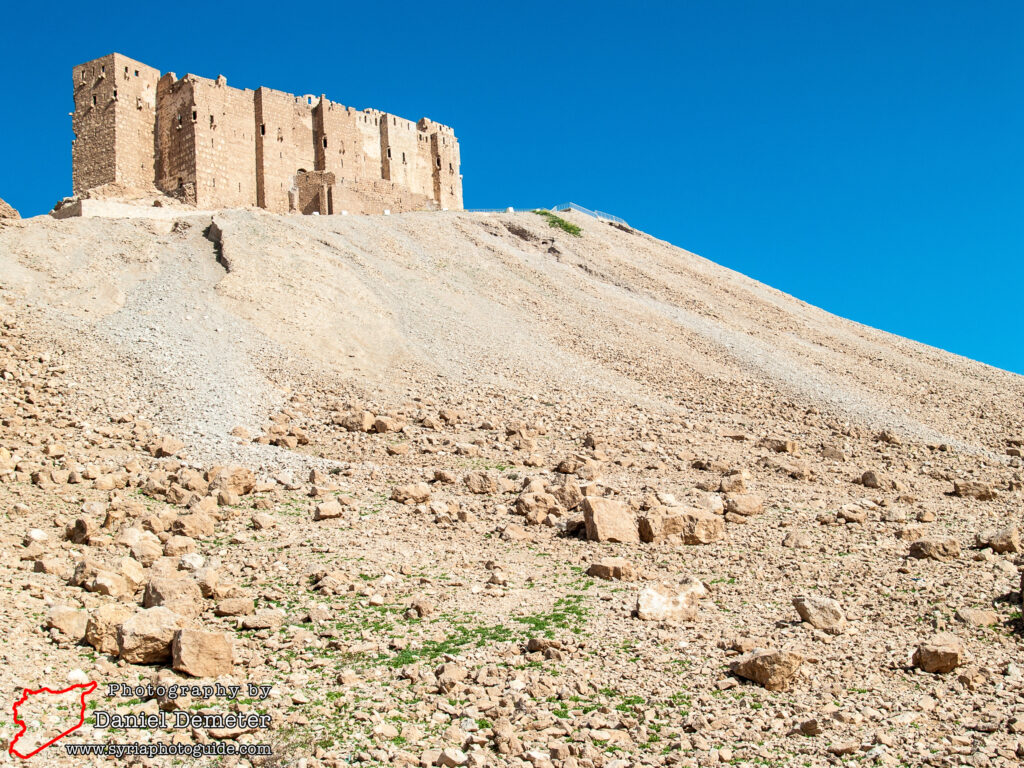
Located west of Palmyra (تدمر) and constructed with stones from its ancient ruins is the Ayyubid-era fortress Qalaat Shirkuh (قلعة شيركوه). Featuring commanding views over the surrounding countryside, a visit to this castle is highly recommended if only to appreciate the magnificent scene of the ancient city below. The effect is greatest at sunrise or sunset, providing one of the most memorable sights in the whole of Syria.
The castle is known by several names, with Qalaat Fakhr al-Din (قلعة فخر الدين) being the most popular. This name refers to the Druze prince Fakhr al-Din Bin Maan (فخر الدين بن معن). Ruling from the Chouf Mountains (Lebanon) in the early 17th century, Fakhr al-Din (فخر الدين) expanded his territory to include this castle in Palmyra (تدمر) from 1630 to 1632, a direct challenge to Ottoman authorities. His exploits were short-lived, however, and he was eventually captured by Ottoman-allied forces from Damascus (دمشق). Fakhr al-Din (فخر الدين) was imprisoned in Istanbul for two years before being executed in 1635. Additional names for the castle include Qalaat Fakhr al-Din Ibn Maani (قلعة فخر الدين المعني) and Qalaat Ibn Maan (قلعة ابن معن).
Another name for the castle, Qalaat Shirkuh (قلعة شيركوه), more accurately reflects the Ayyubid origins of the site. This original fortification was likely constructed under al-Mujahid Assad al-Din Shirkuh II (المجاهد أسد الدين شيركوه), an Ayyubid prince that ruled from Homs (حمص) between 1186 and 1240. His fifty-four year rule was remarkable for the period, making Homs (حمص) the most stable of Ayyubid states. He was a grandson of Assad al-Din Shirkuh Bin Shadhi (أسد الدين شيركوه بن شاذي) and second cousin of Salah al-Din Yousef Bin Ayoub (صلاح الدين يوسف بن أيوب). He was also responsible for the construction of Qalaat al-Shamamis (قلعة الشماميس) and controlled Qalaat al-Rahbeh (قلعة الرحبة).
The fortress is relatively small, based on a triangular design with seven towers that was later expanded with curtain walls to the east and west. It is surrounded by a deep moat that is spanned by a modern foot bridge. The interior chambers are compact, with passages leading up to an open courtyard surrounded by ramparts. The defenses are heaviest on the castle’s southern side. There is a modest entrance fee required to visit the fortress.
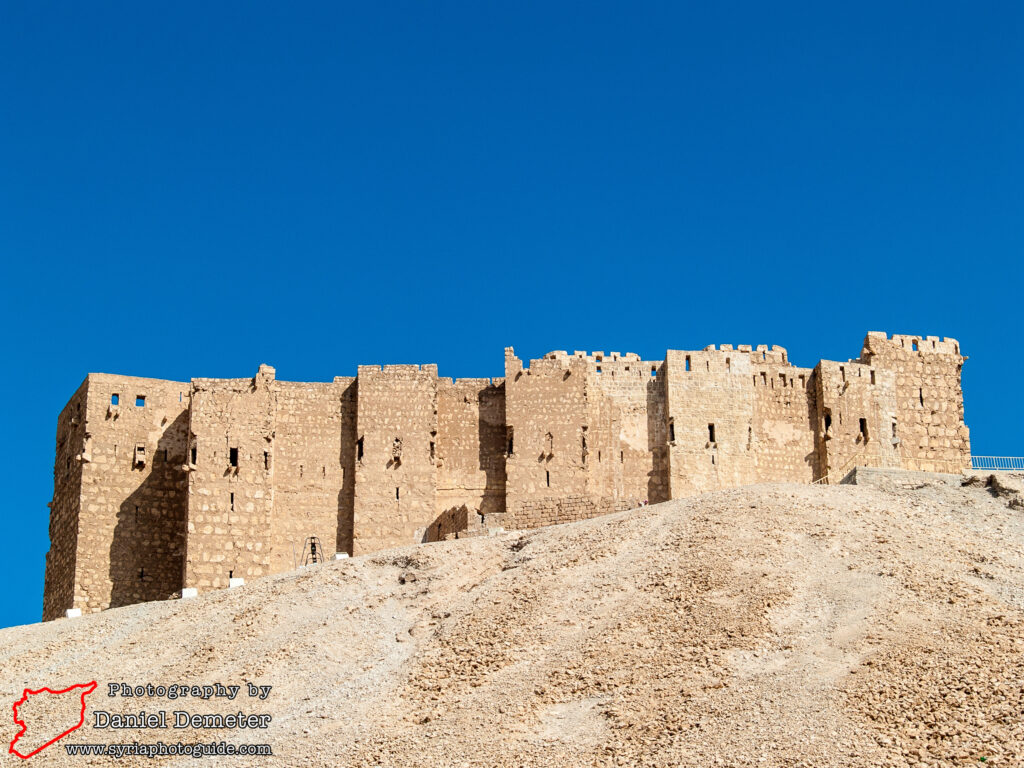
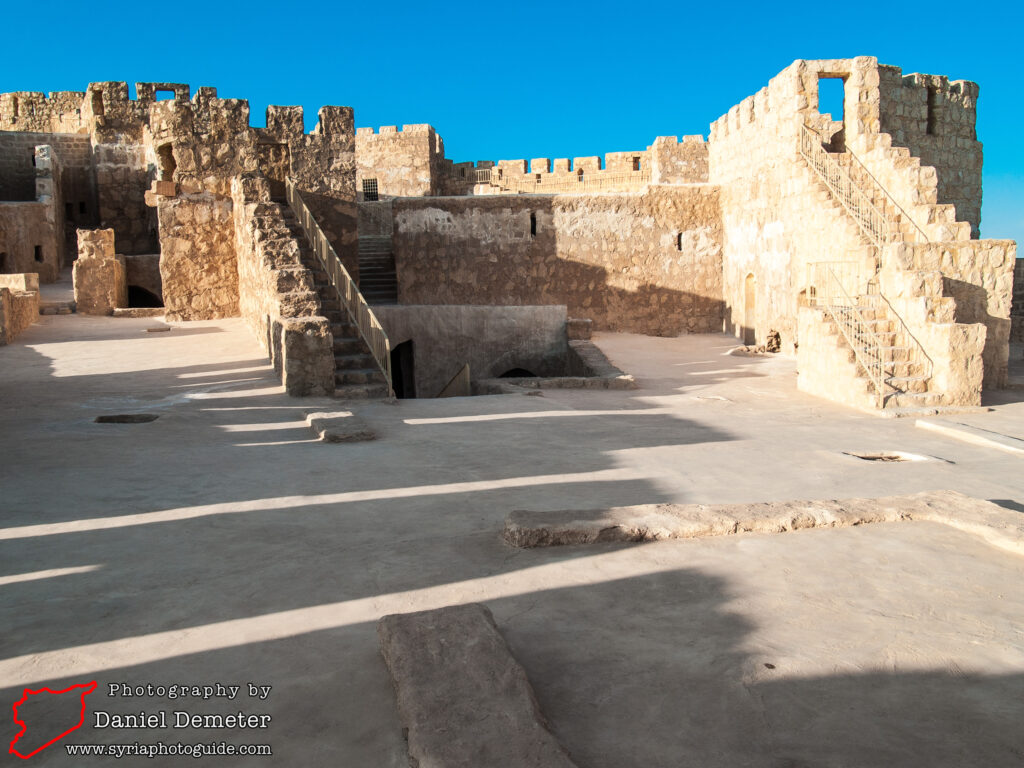
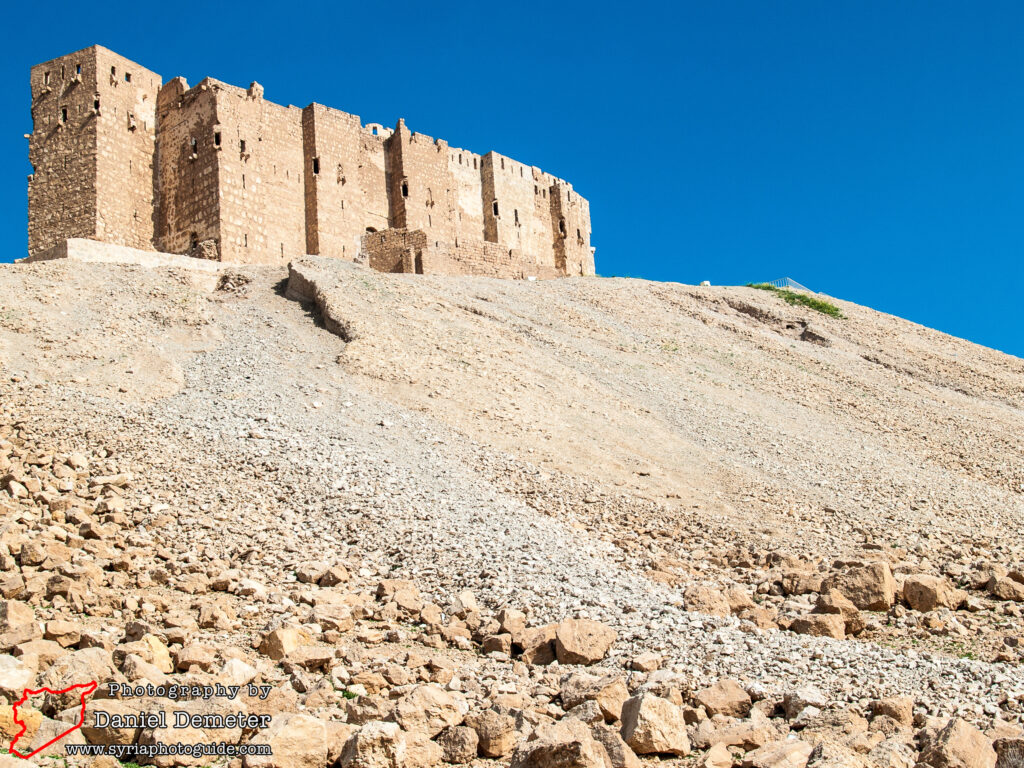
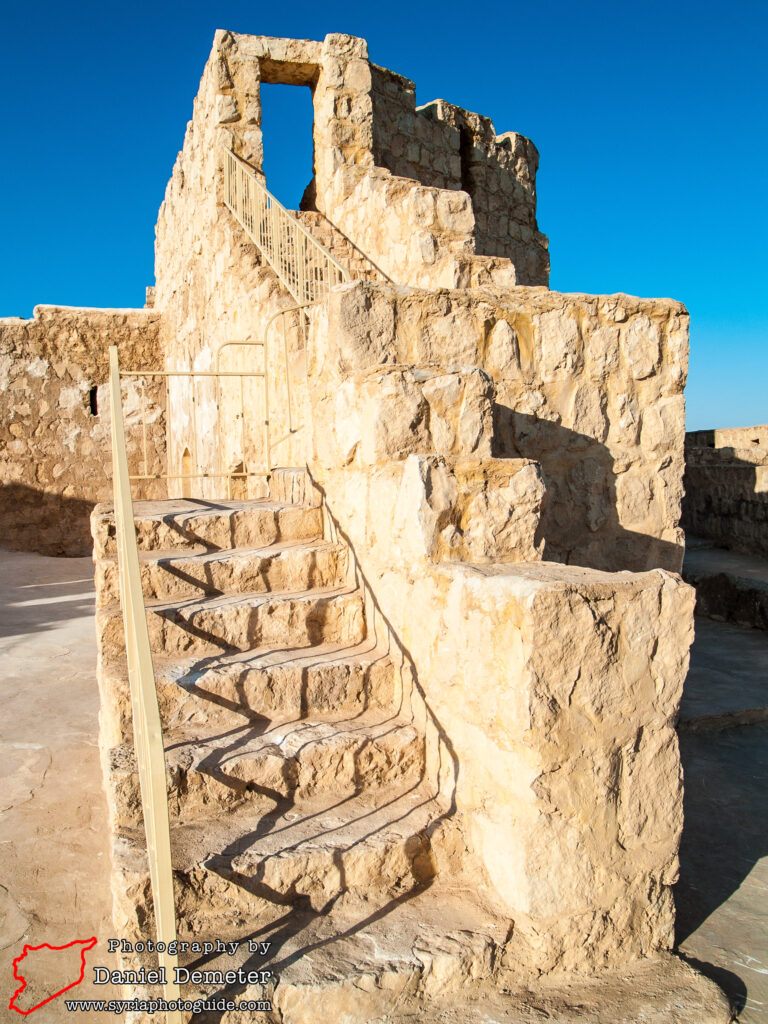
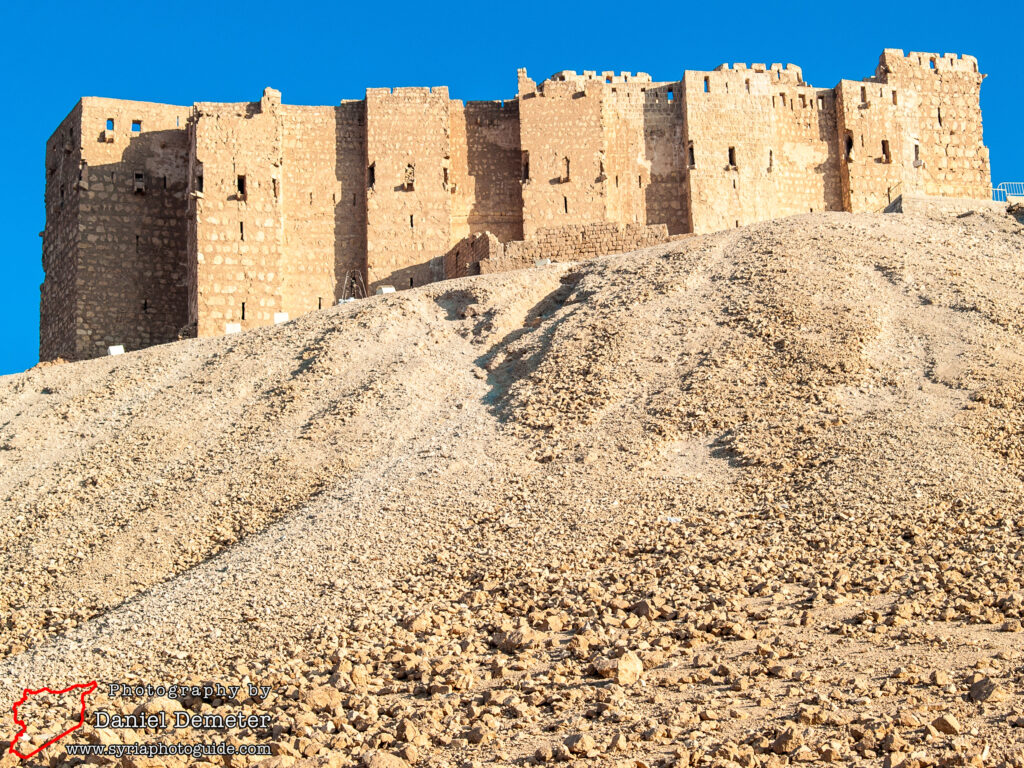
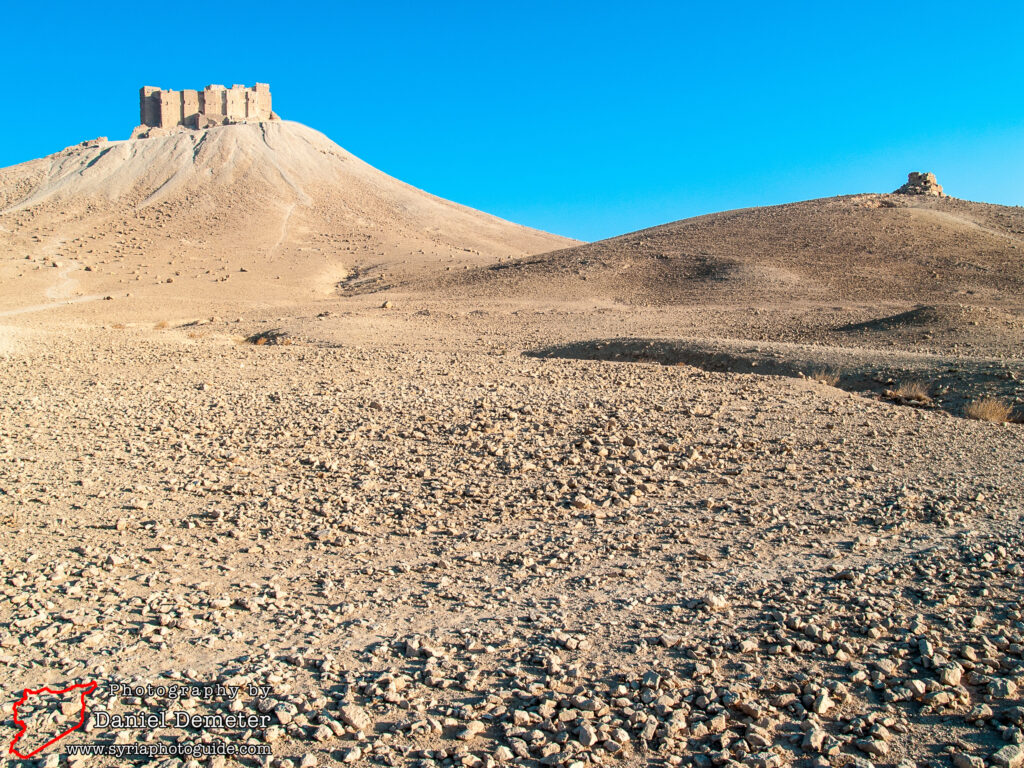
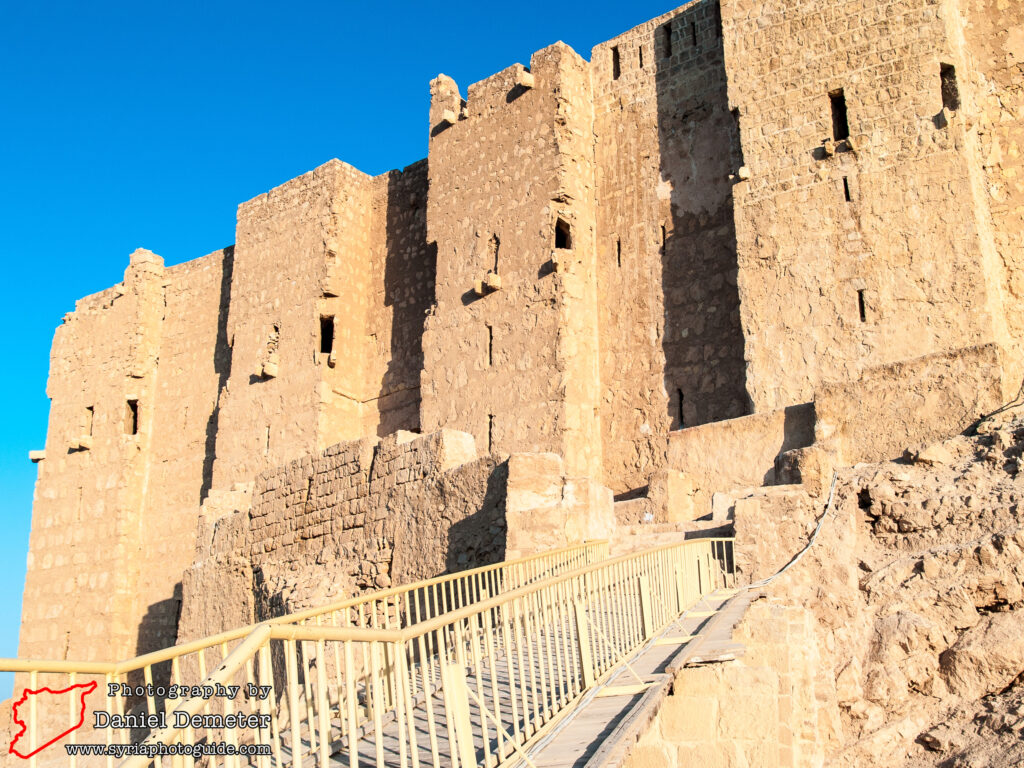
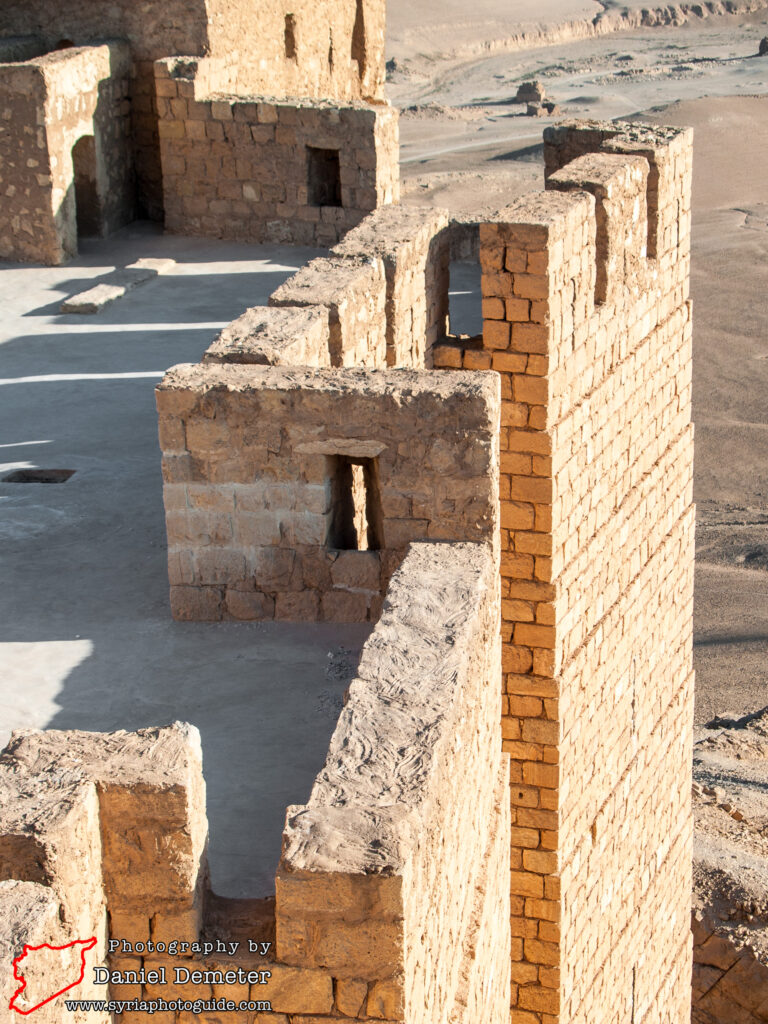

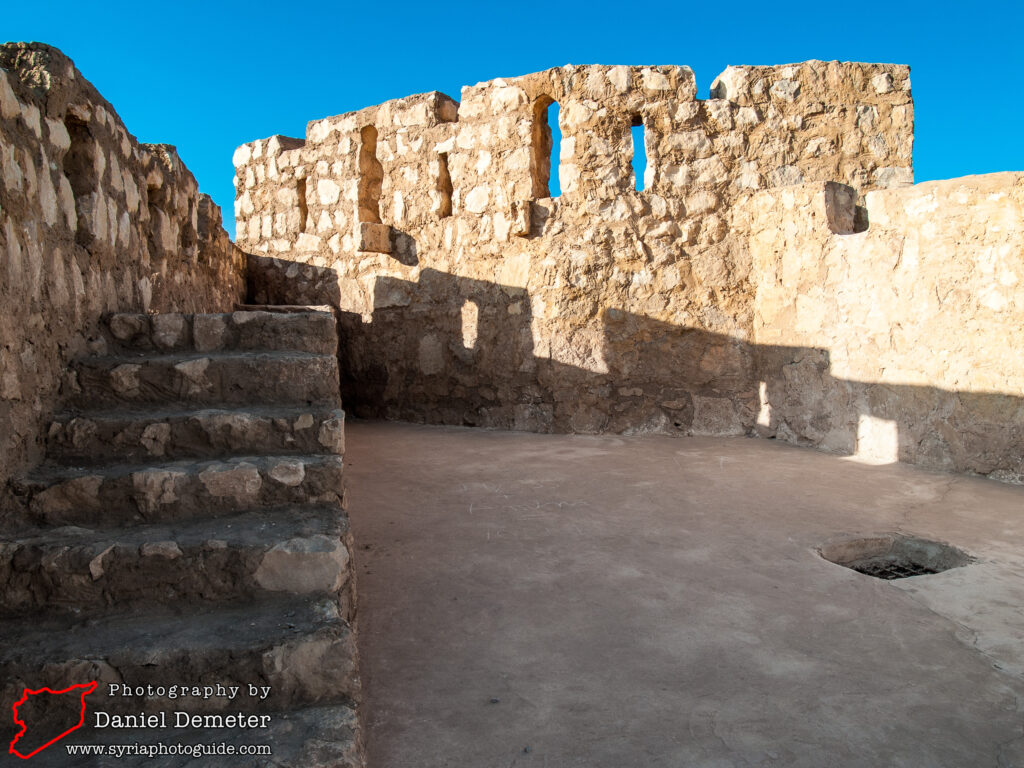
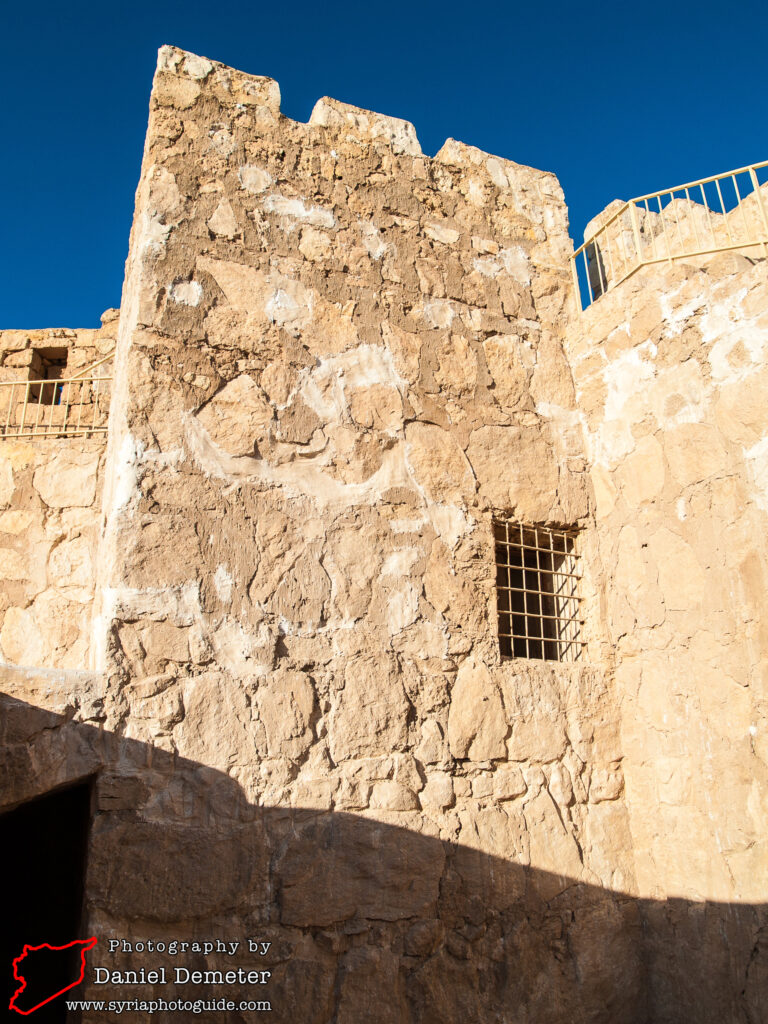
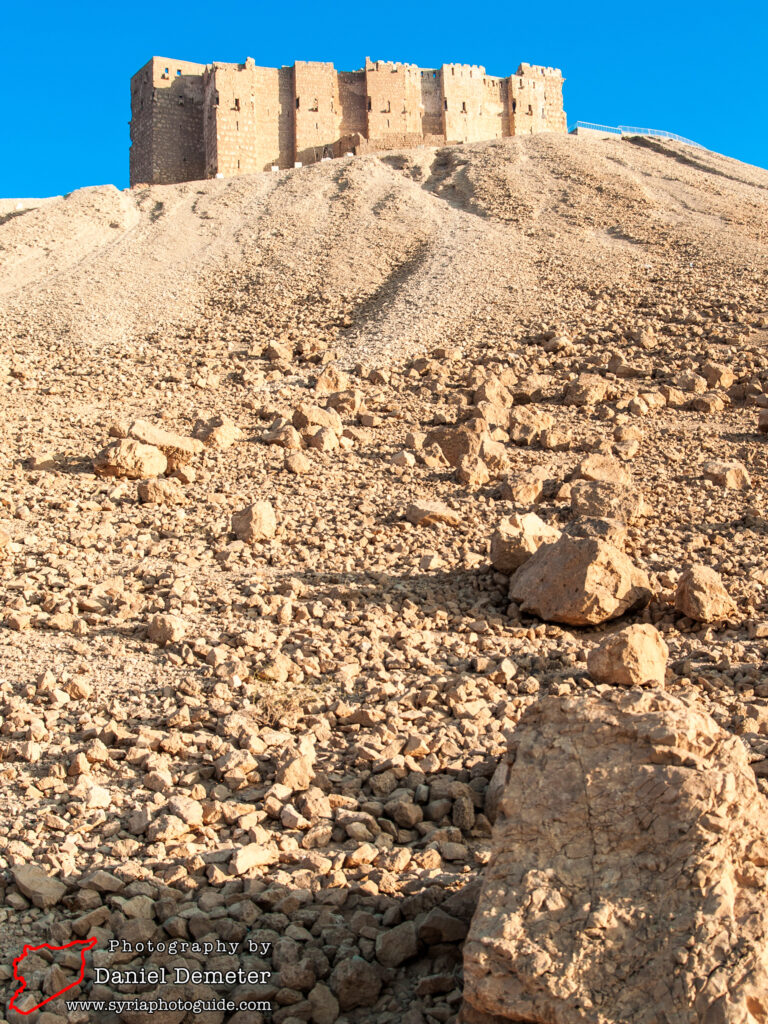
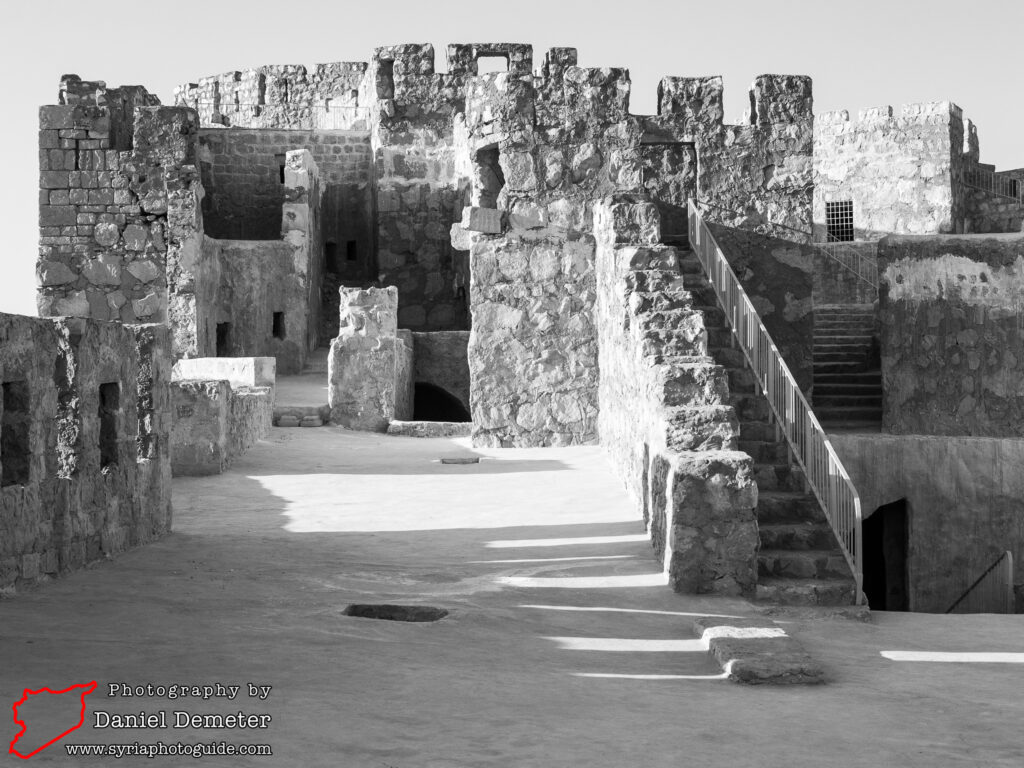
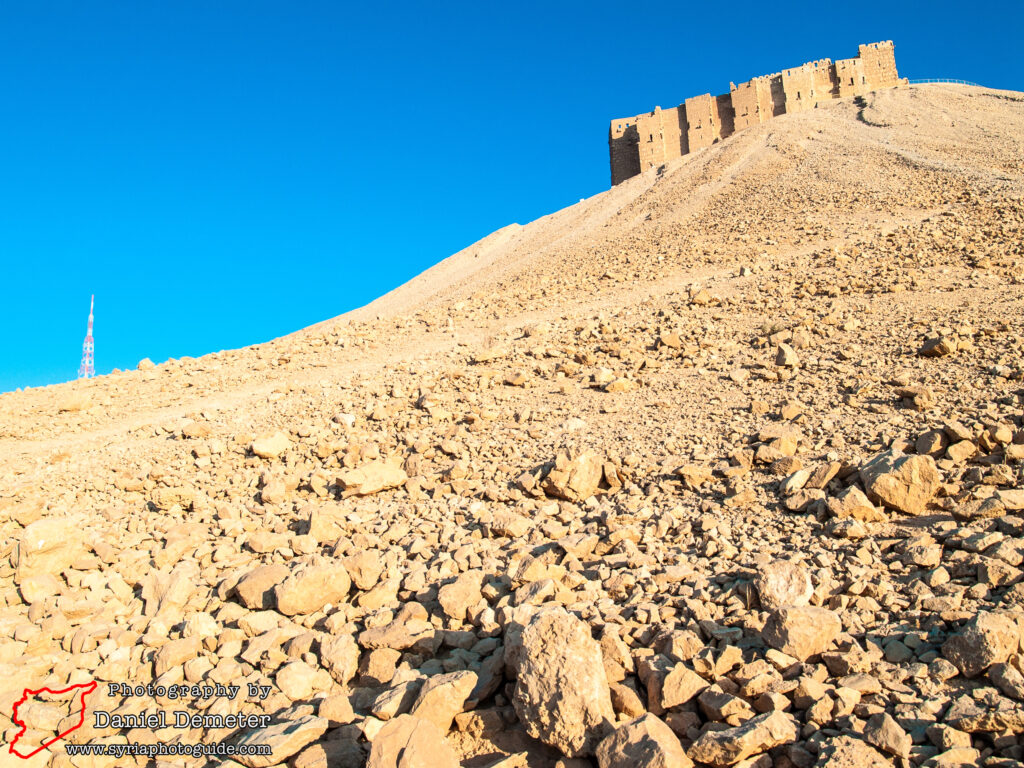
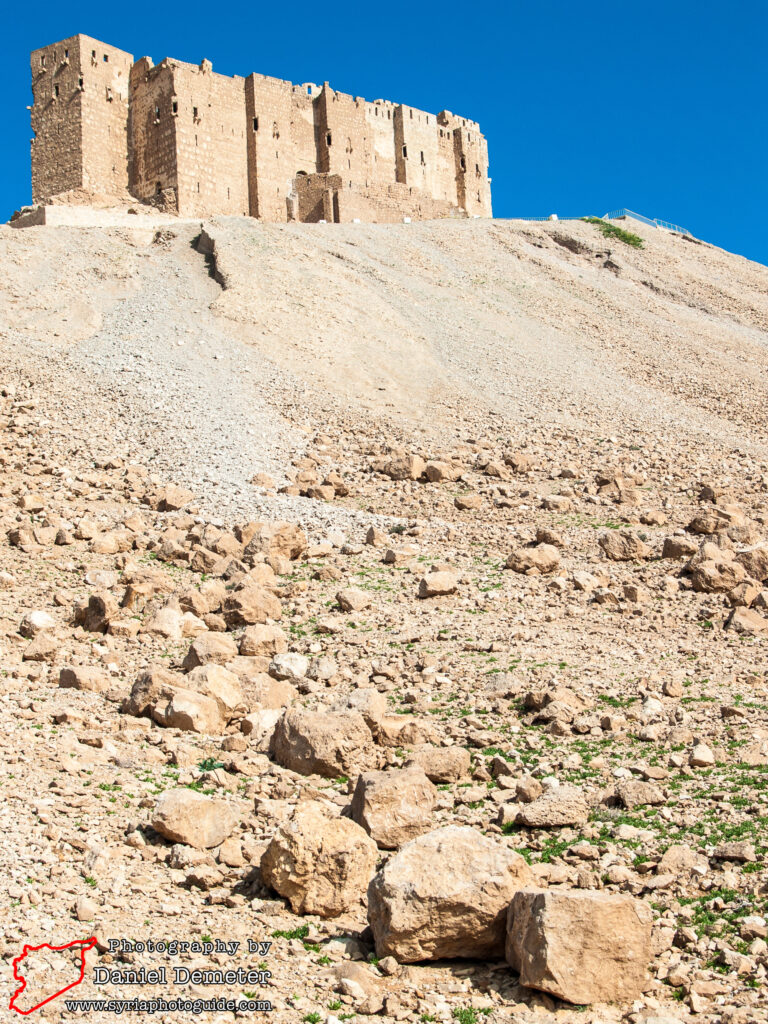
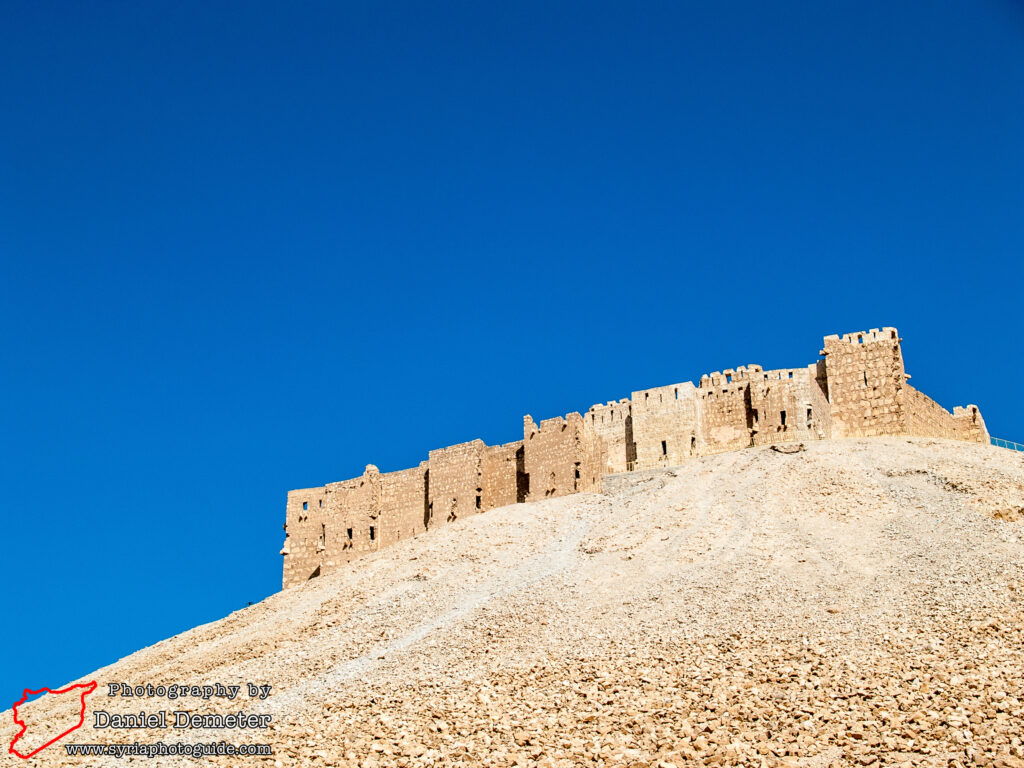
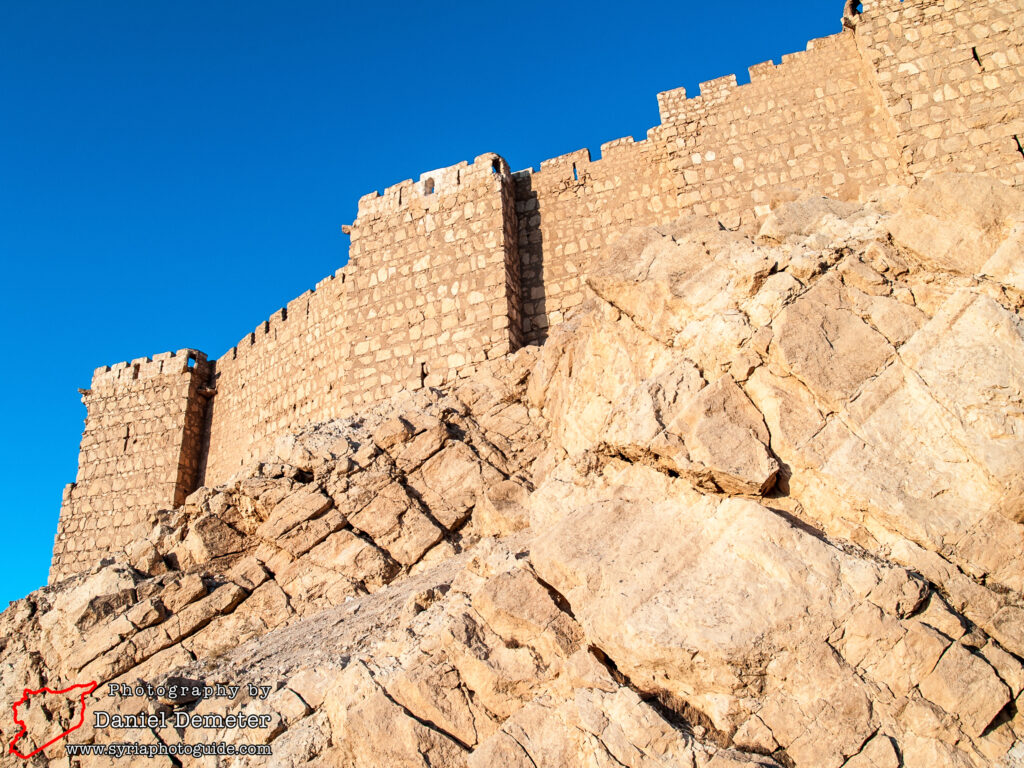
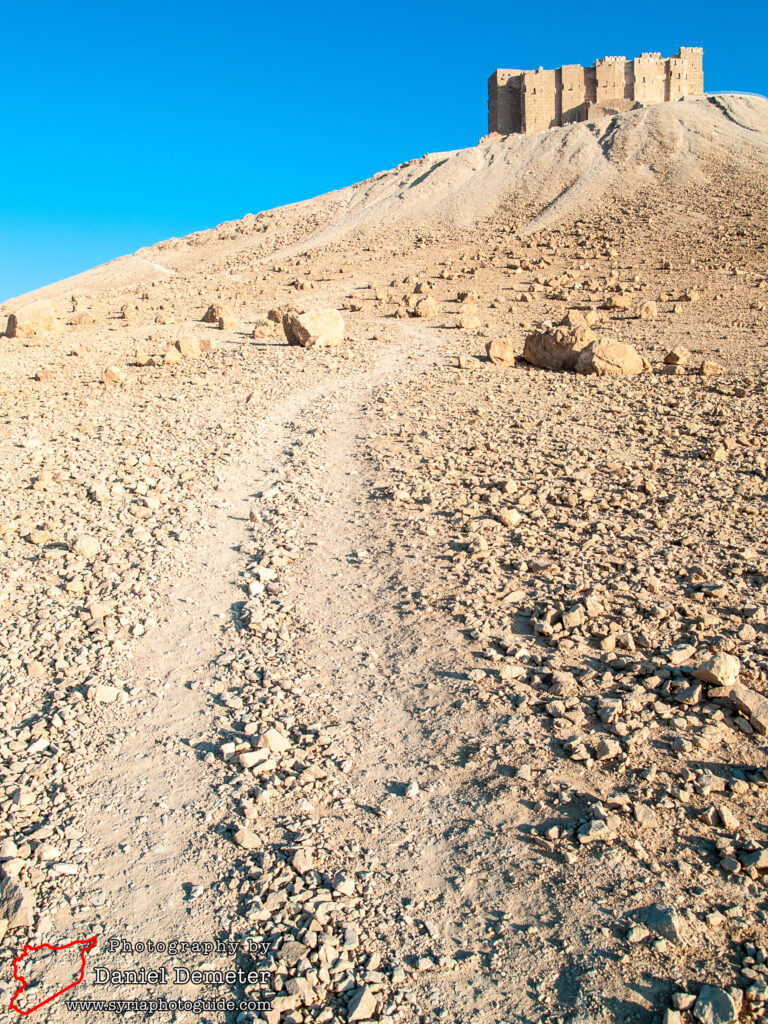
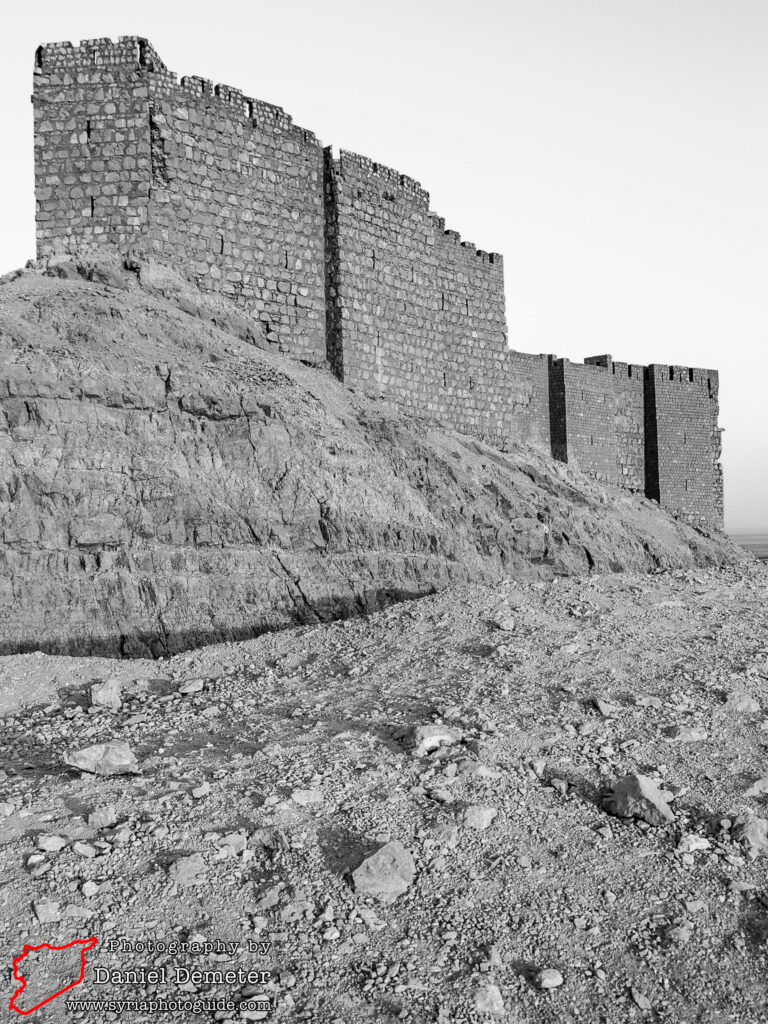
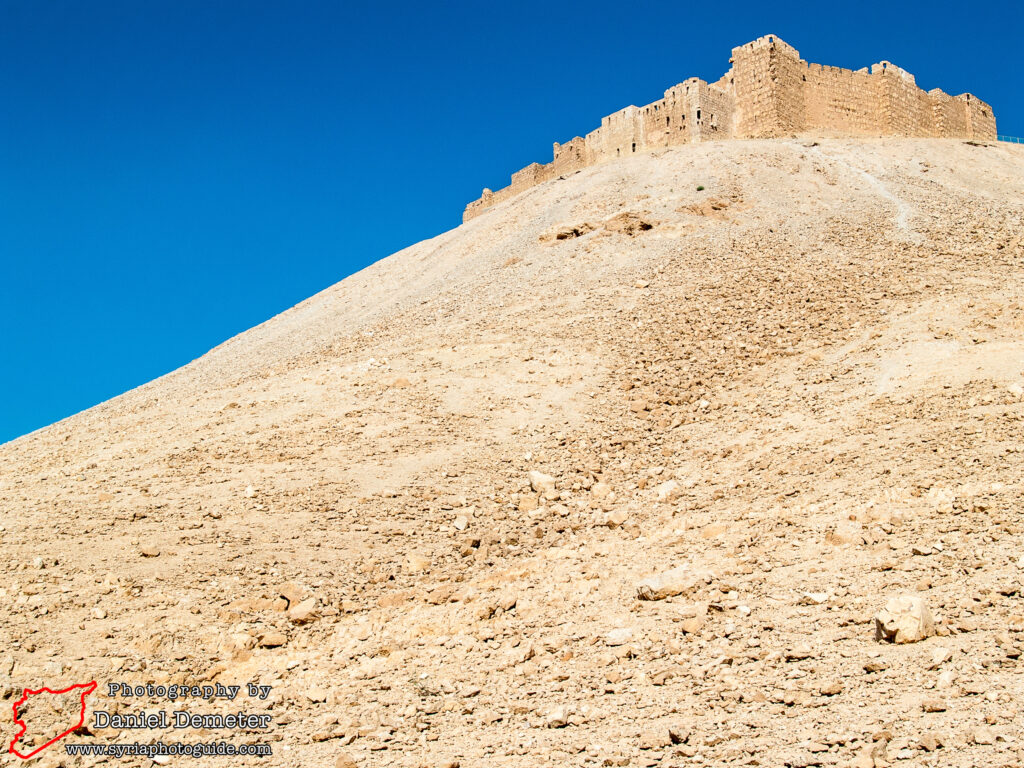
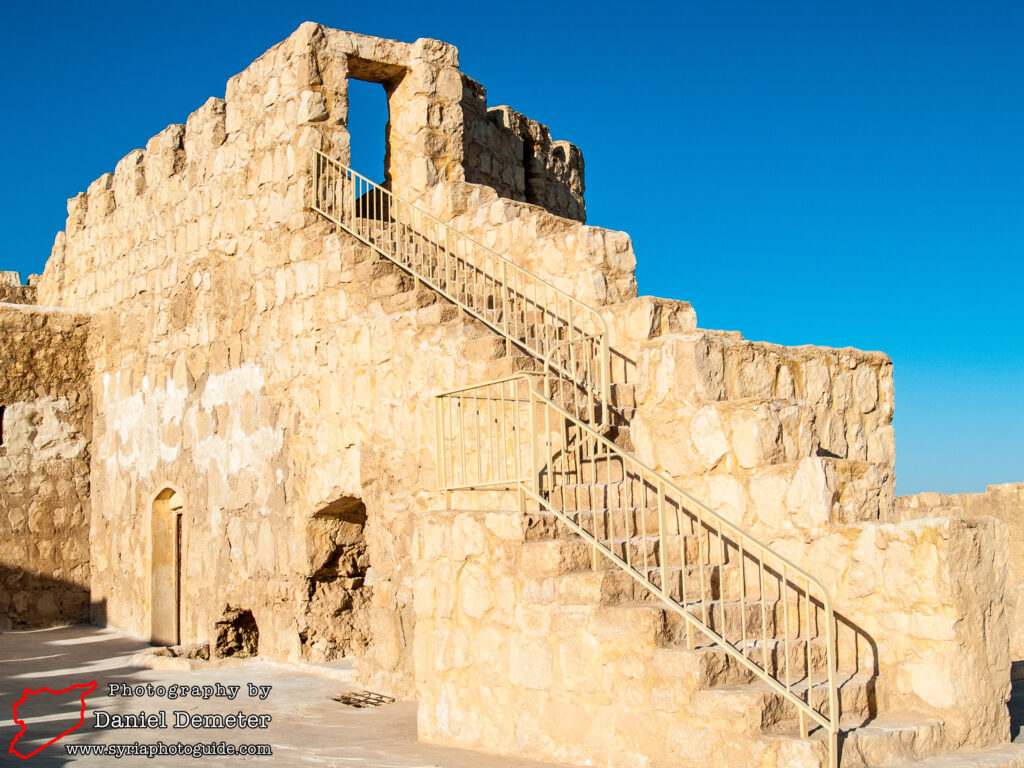
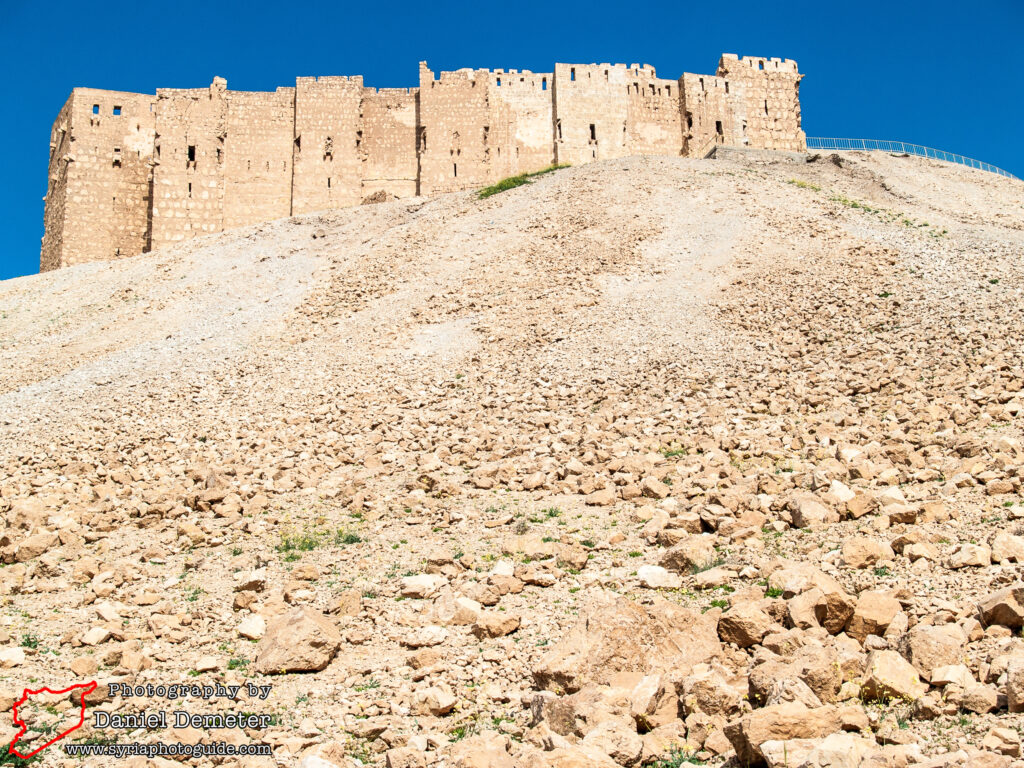
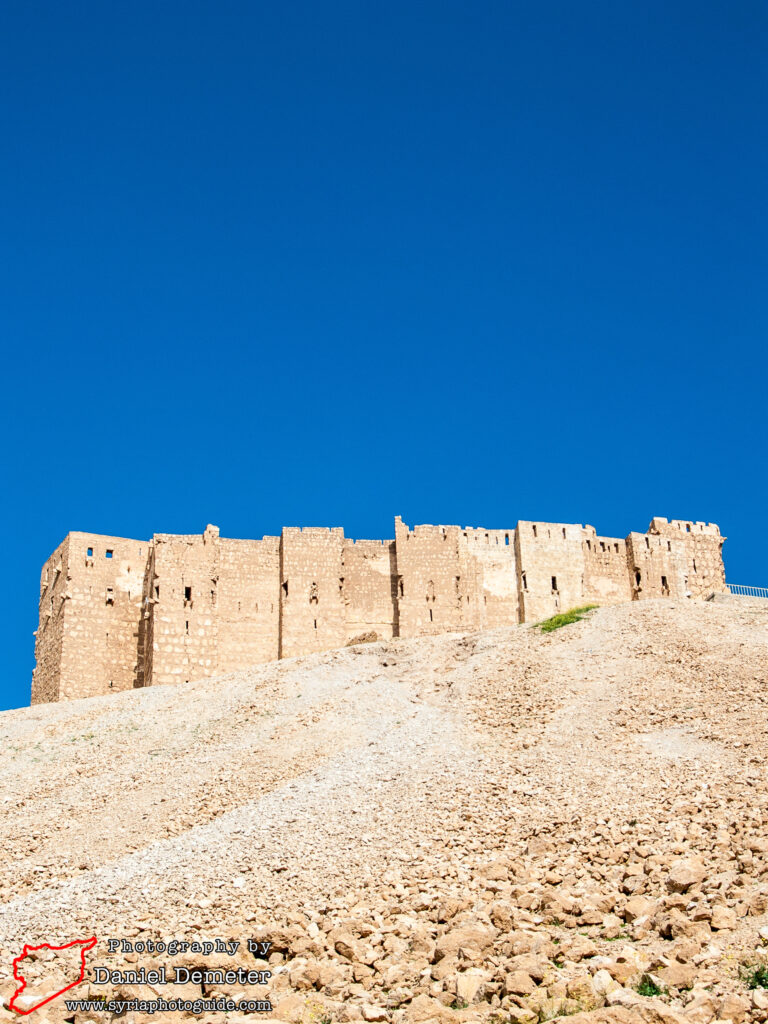
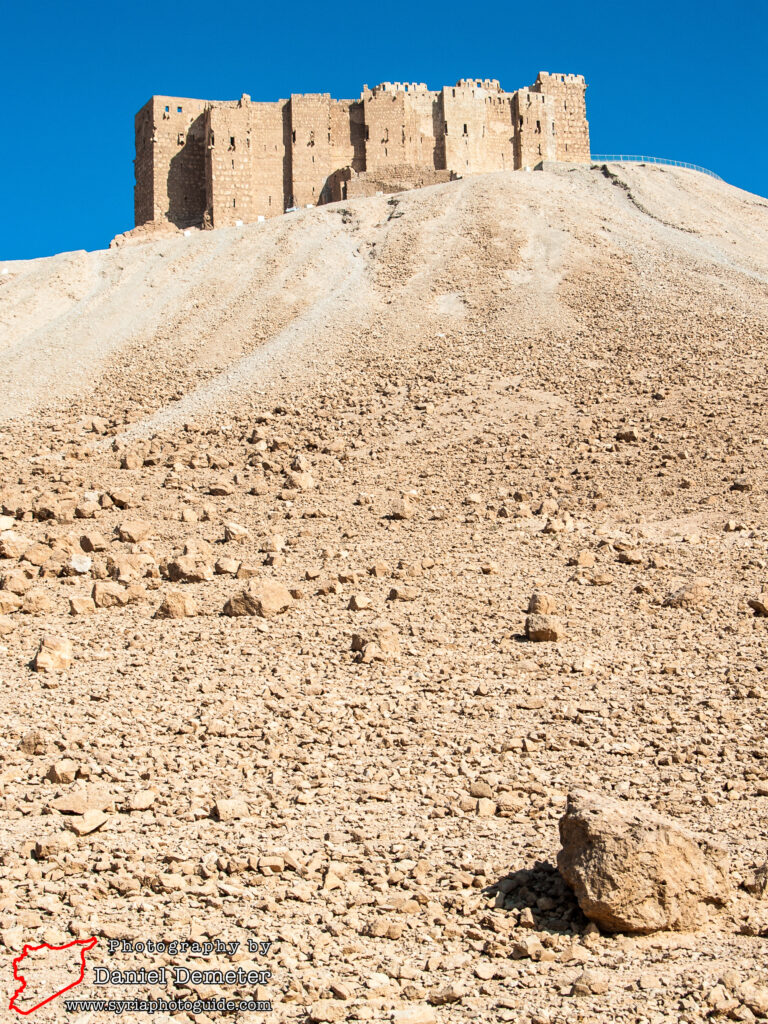
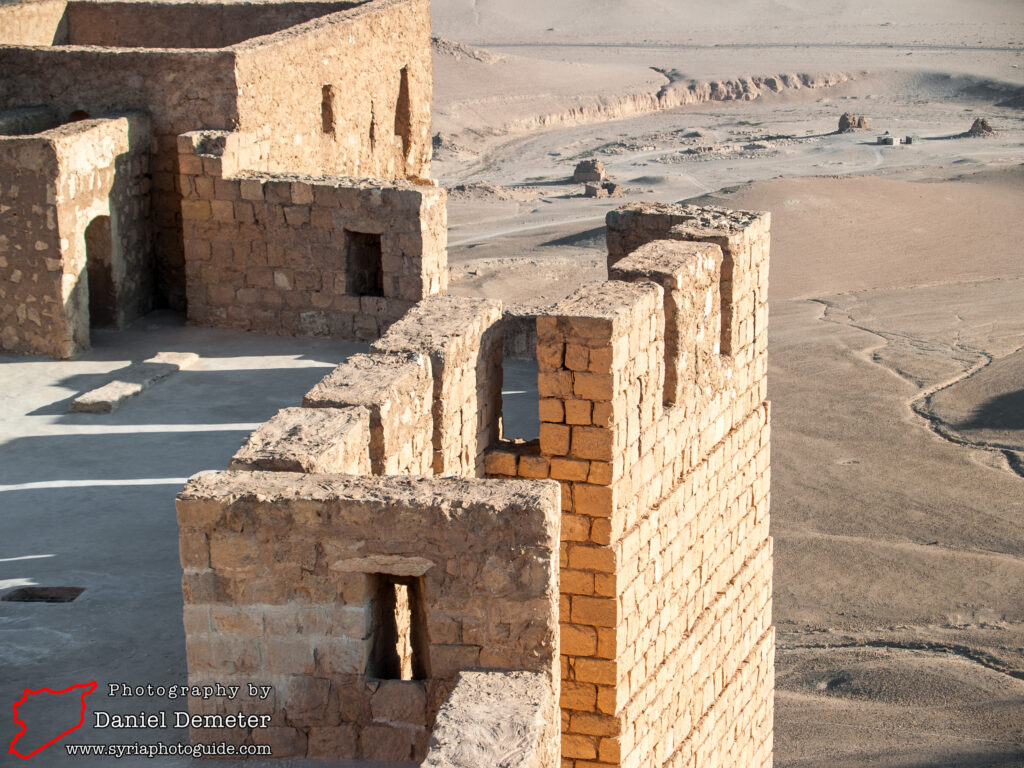
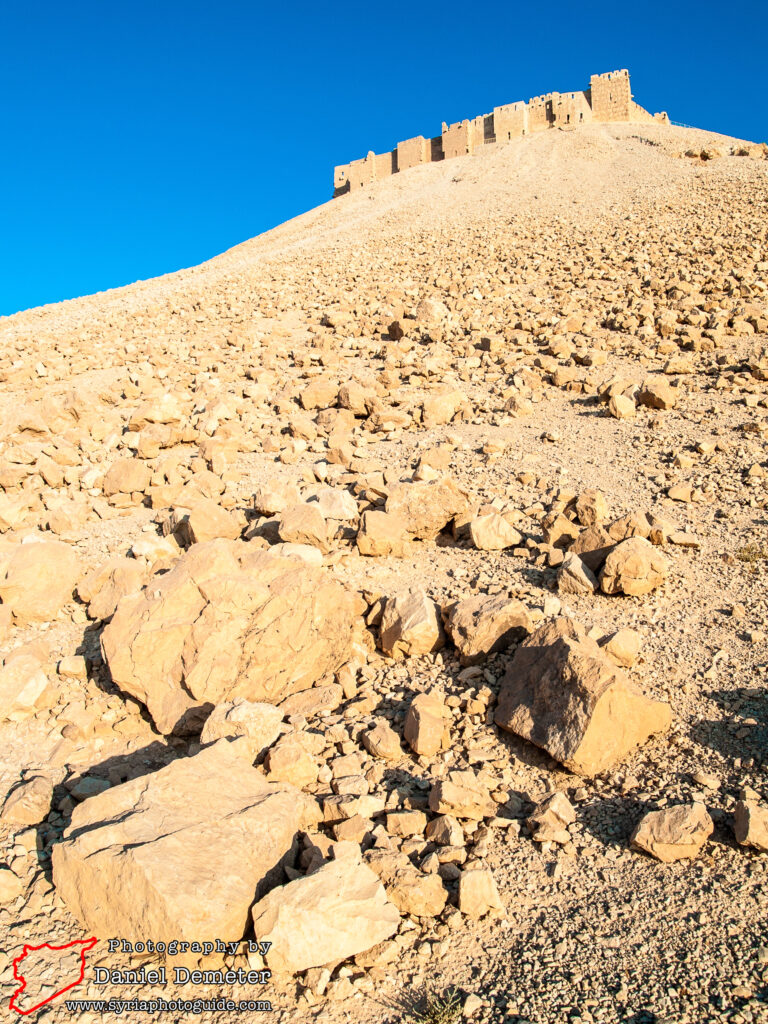
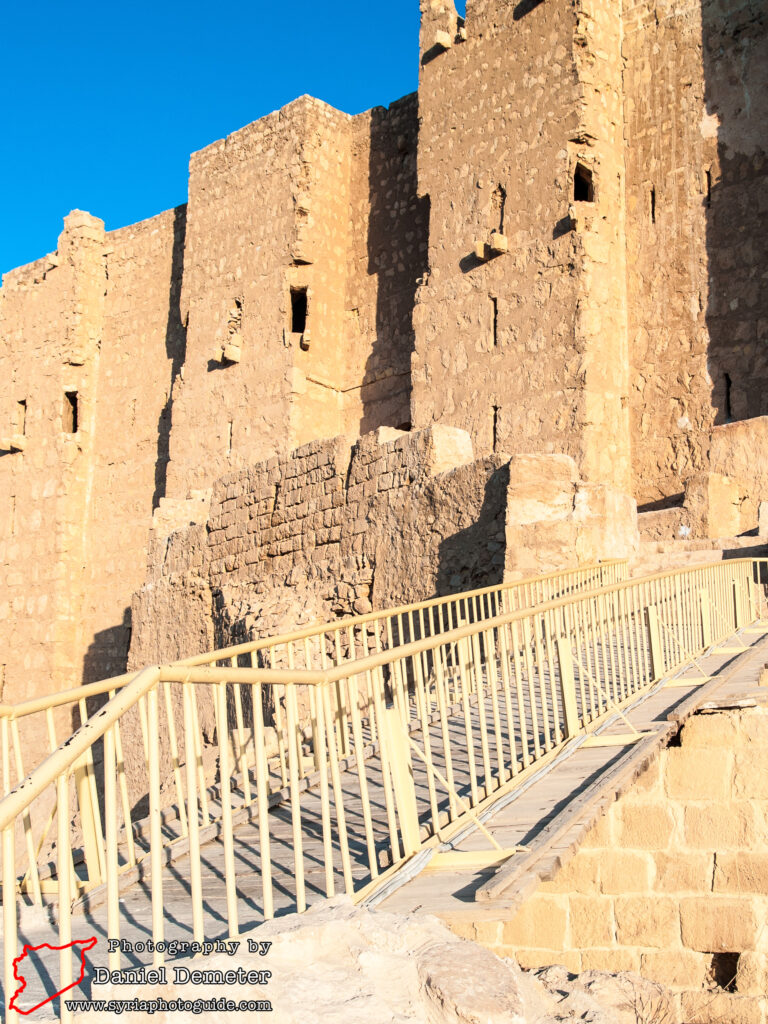
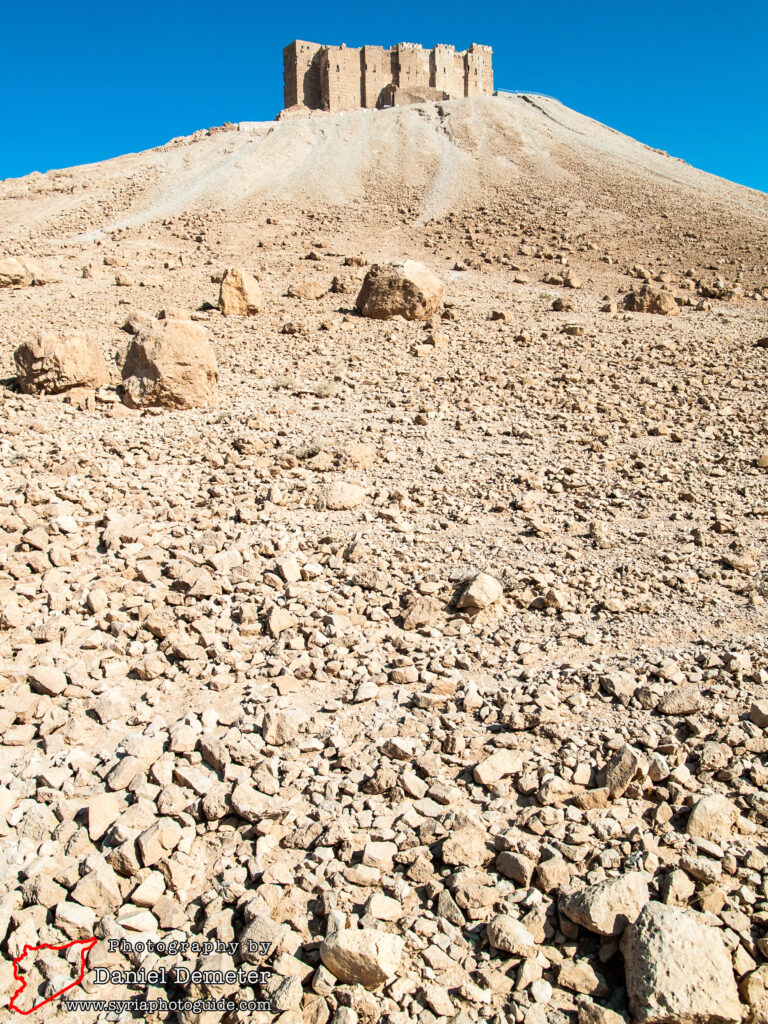
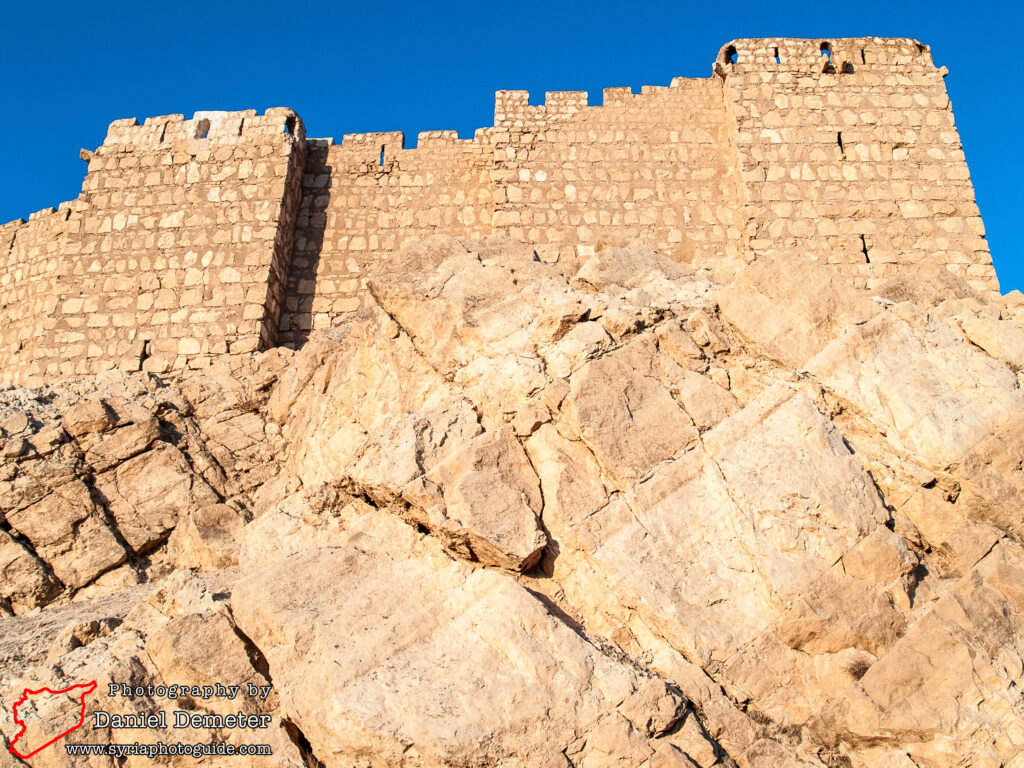
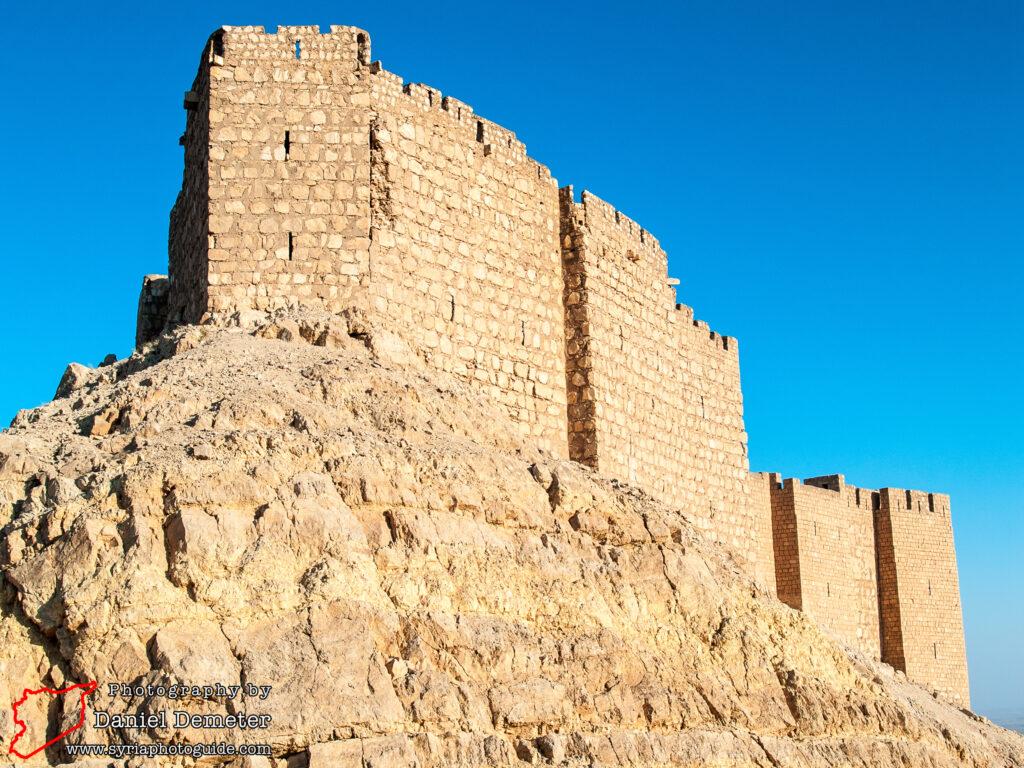

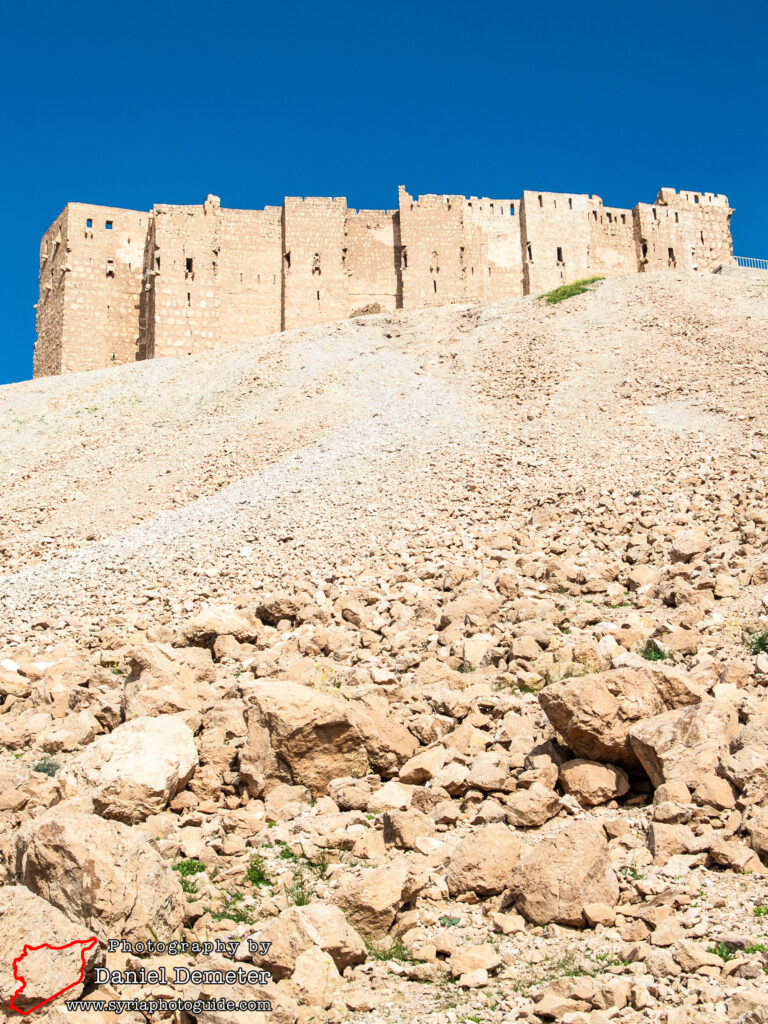
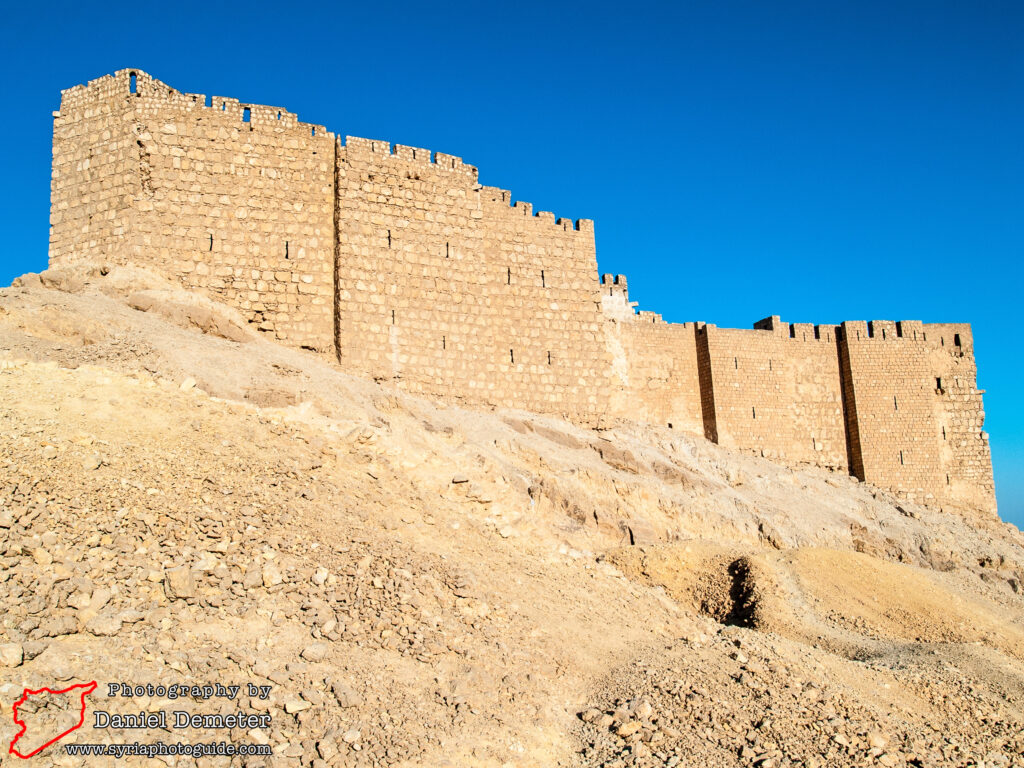
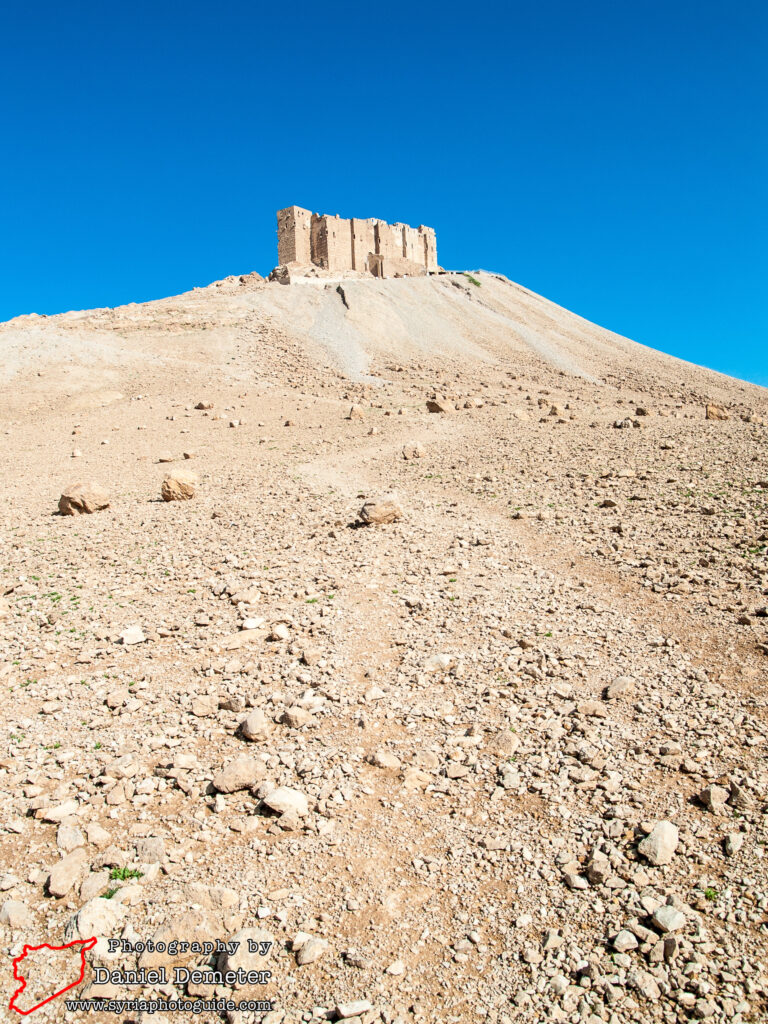
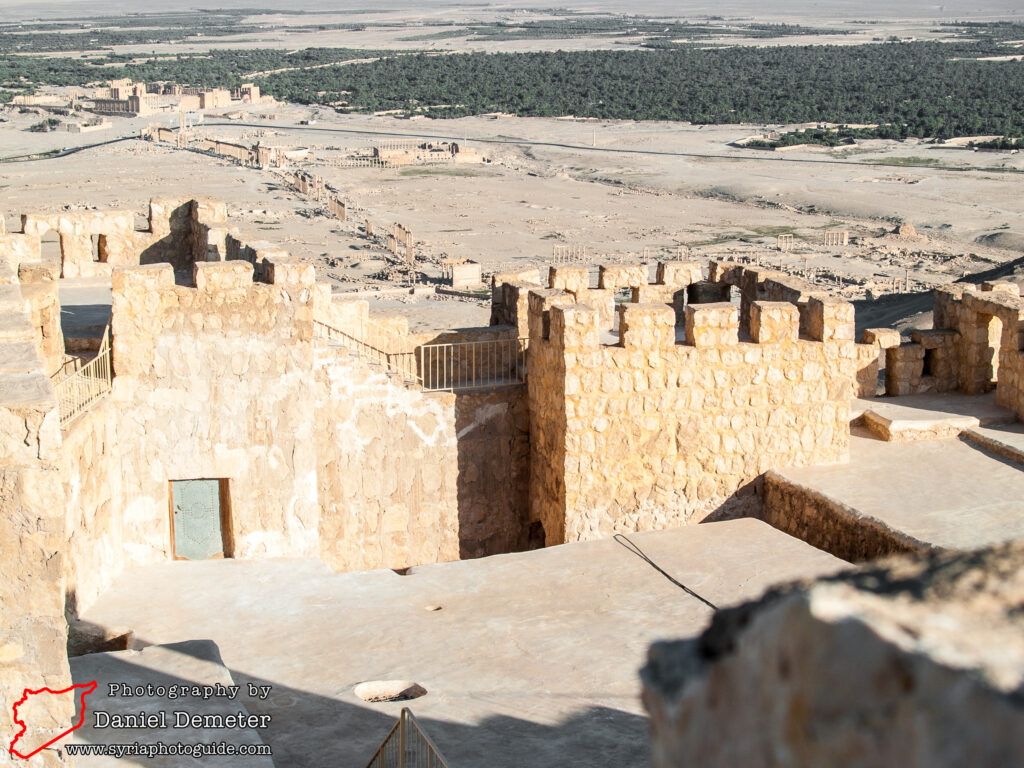
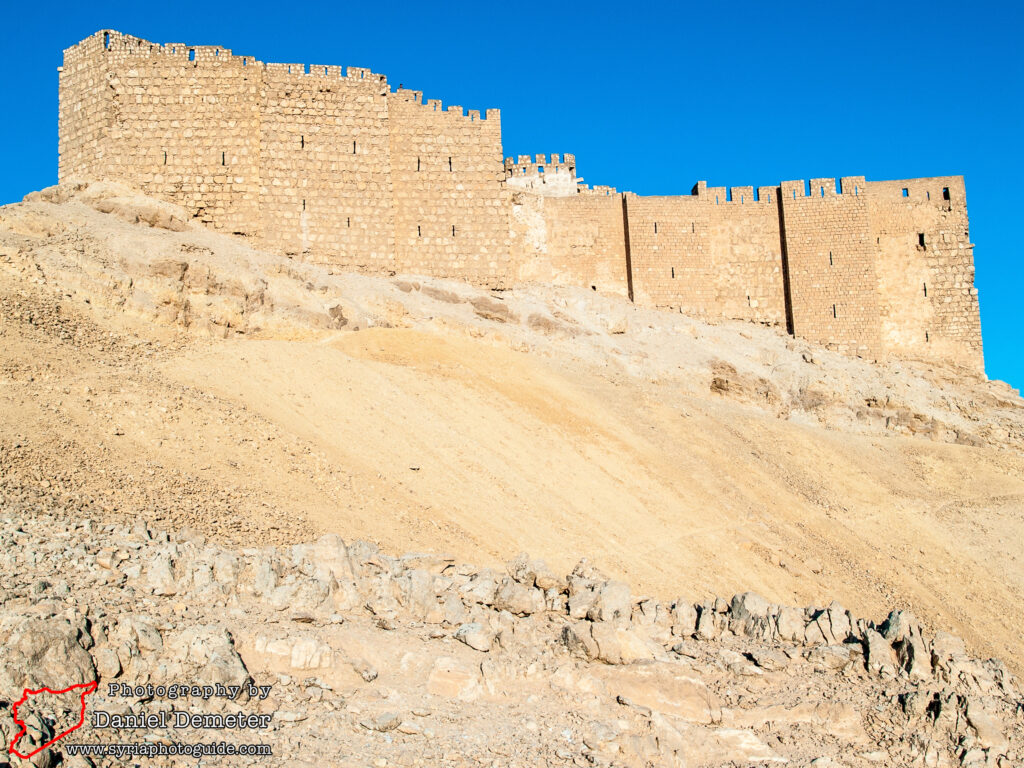
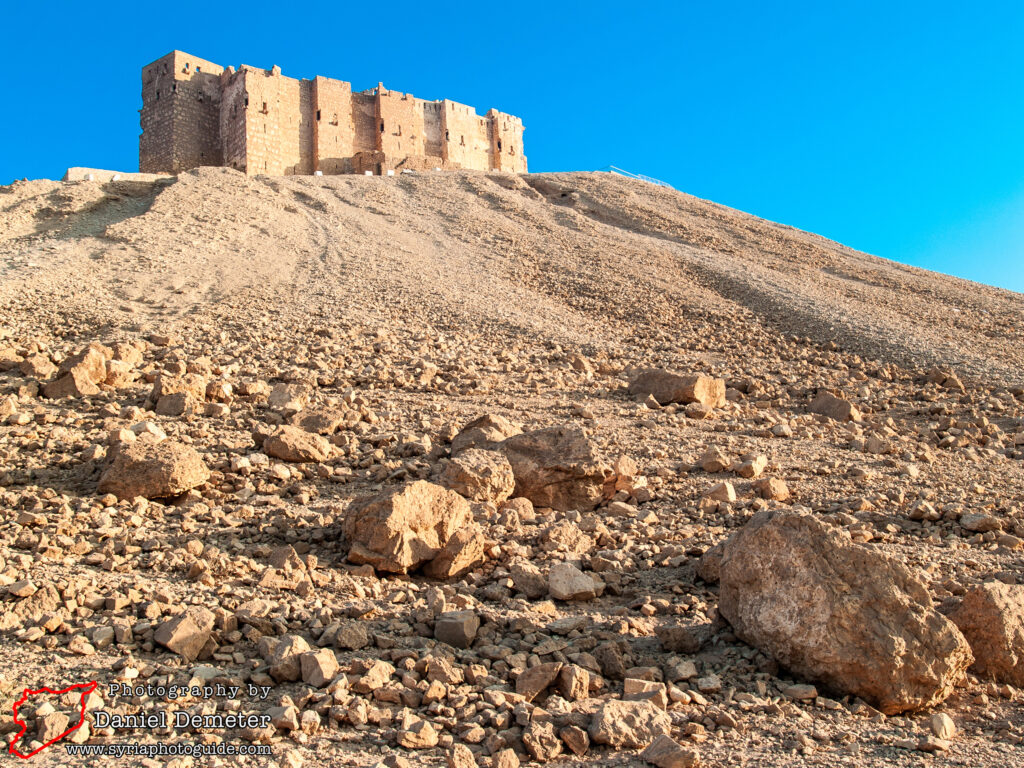
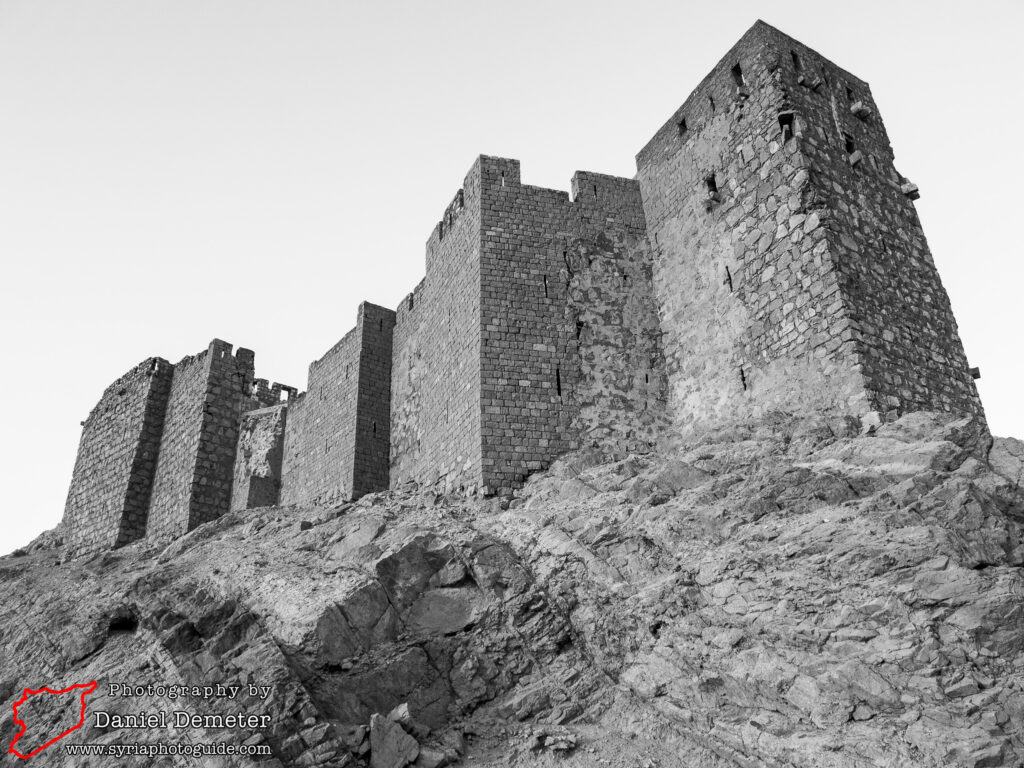
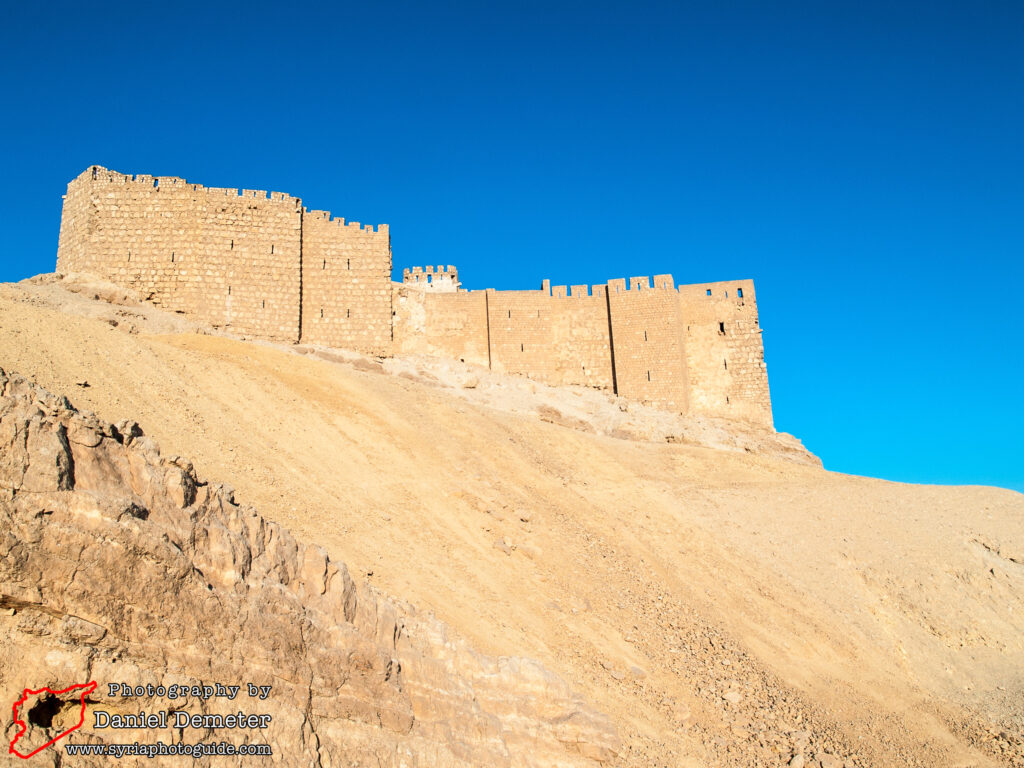
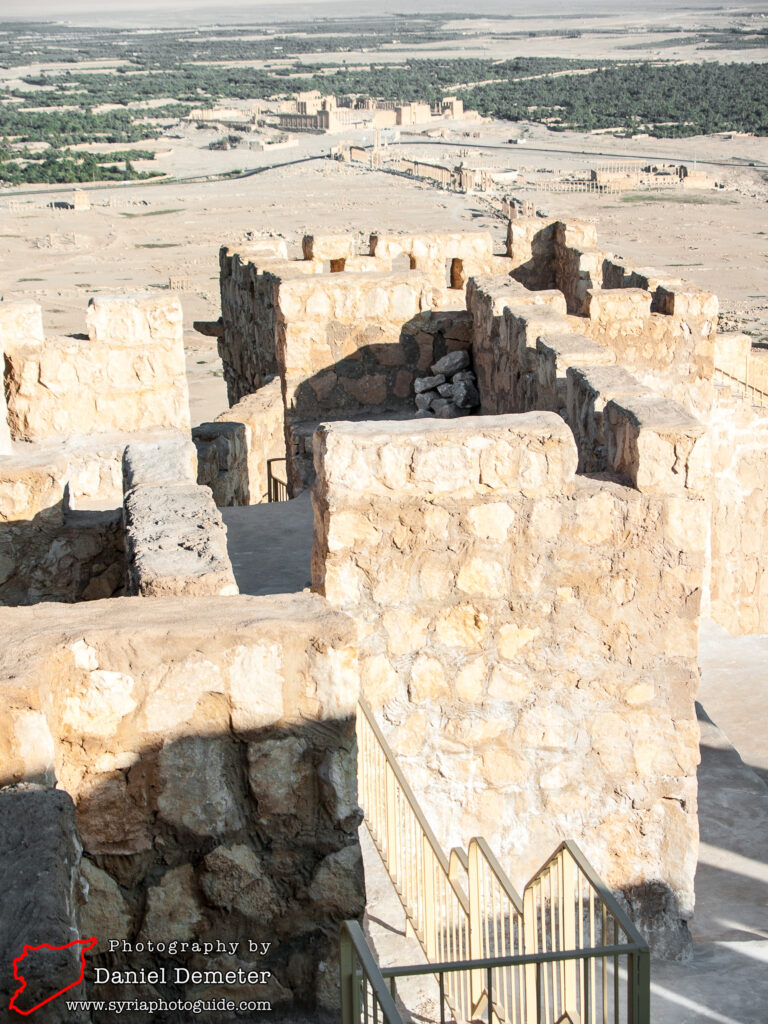
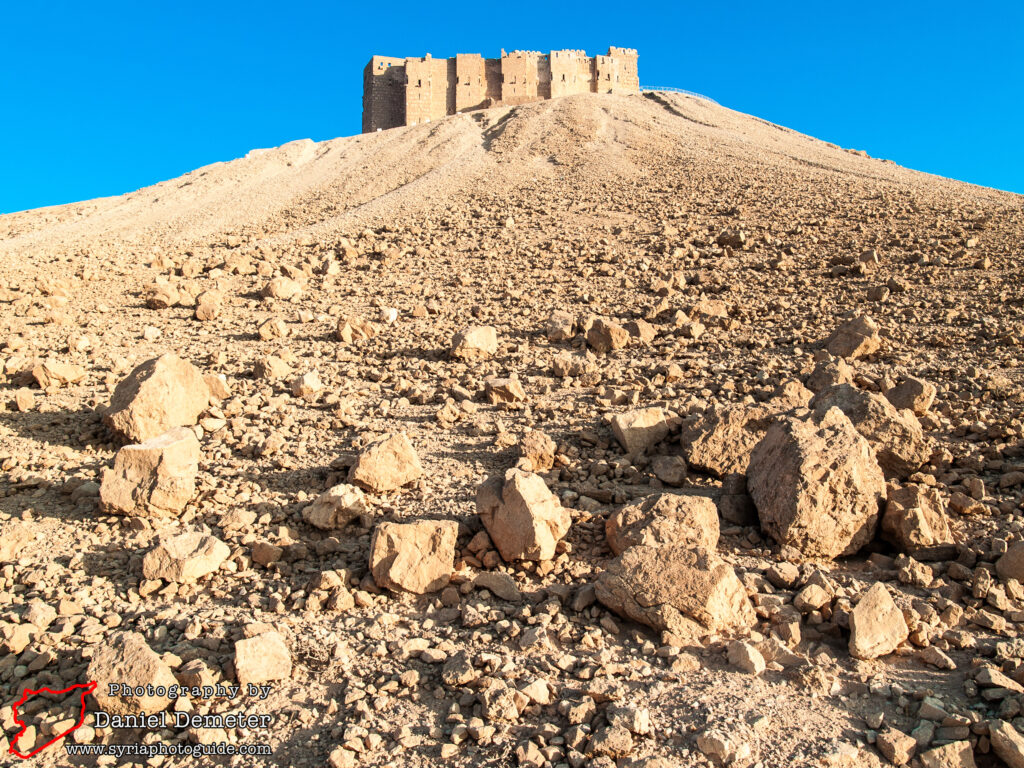
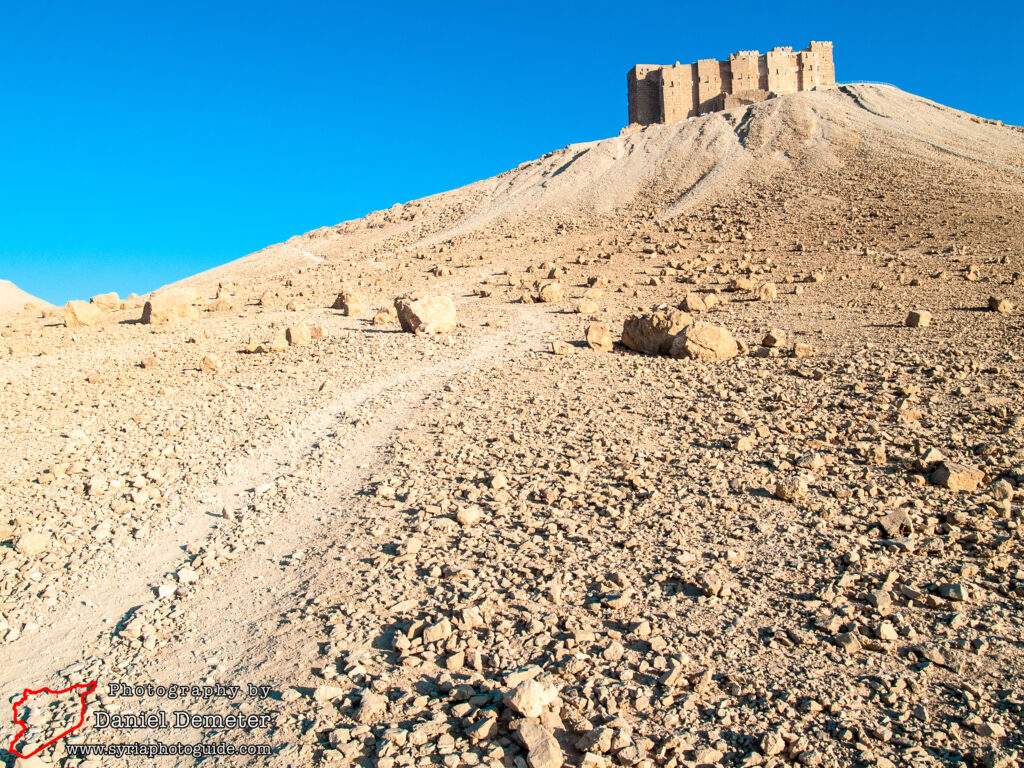

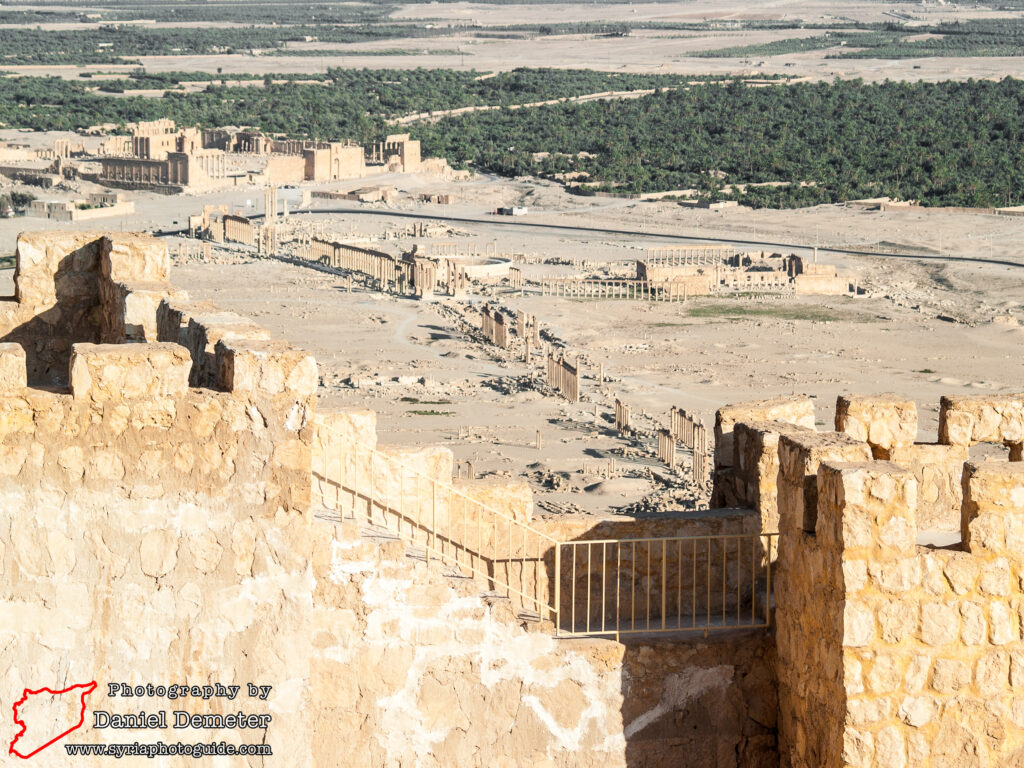
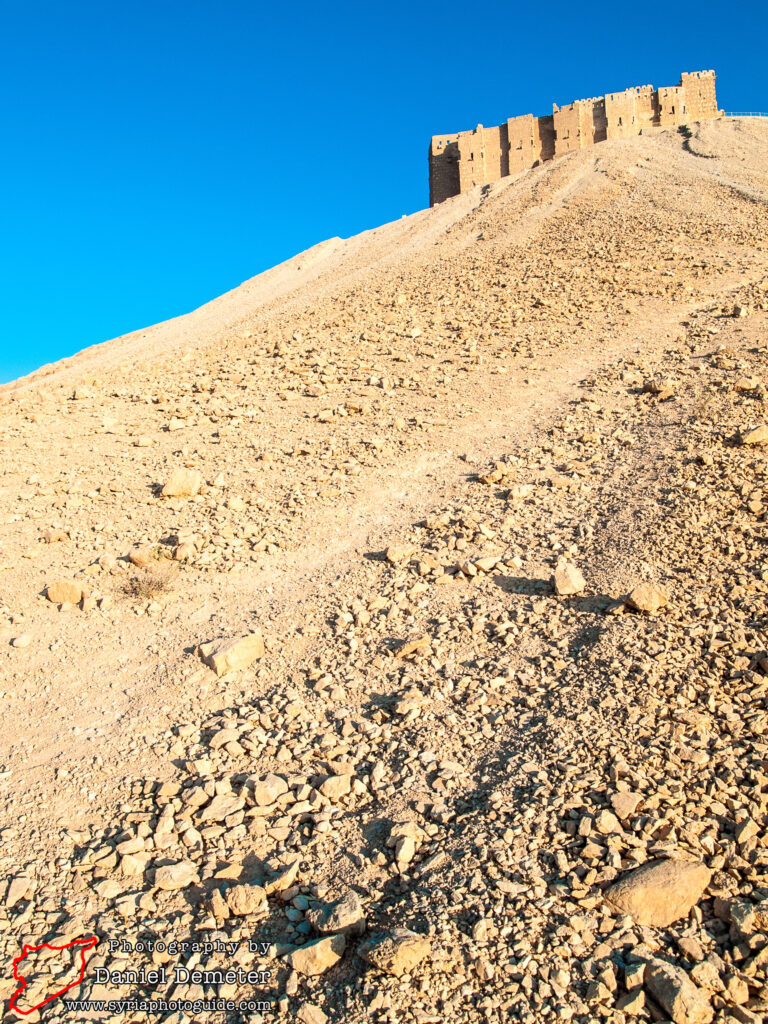
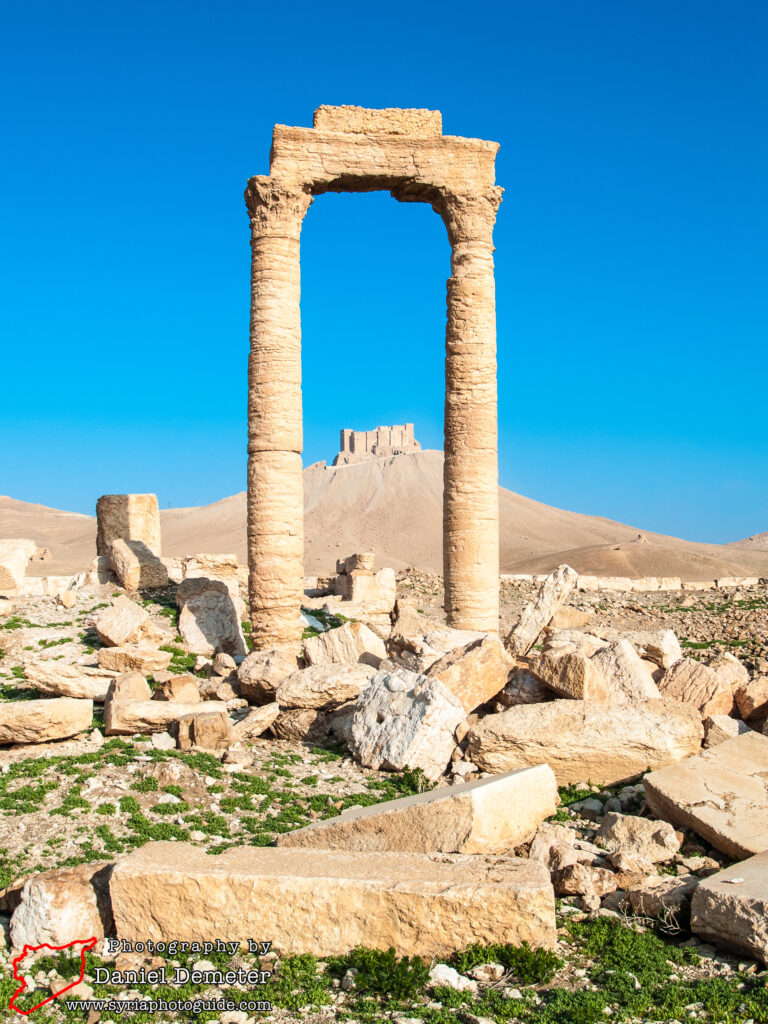
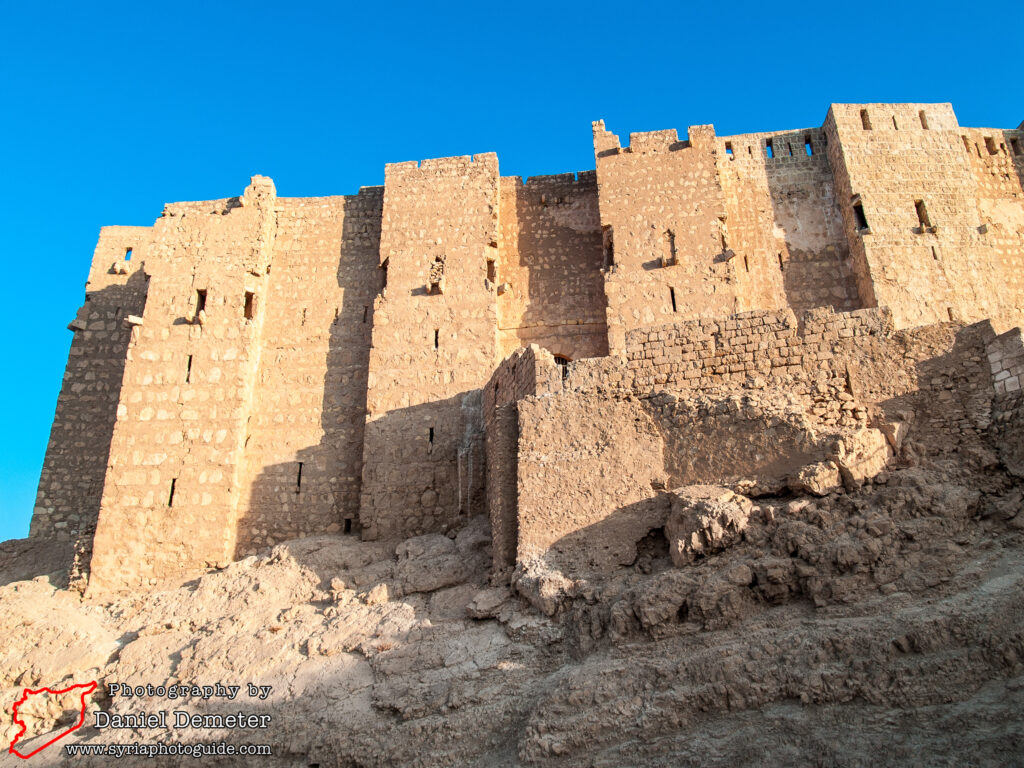
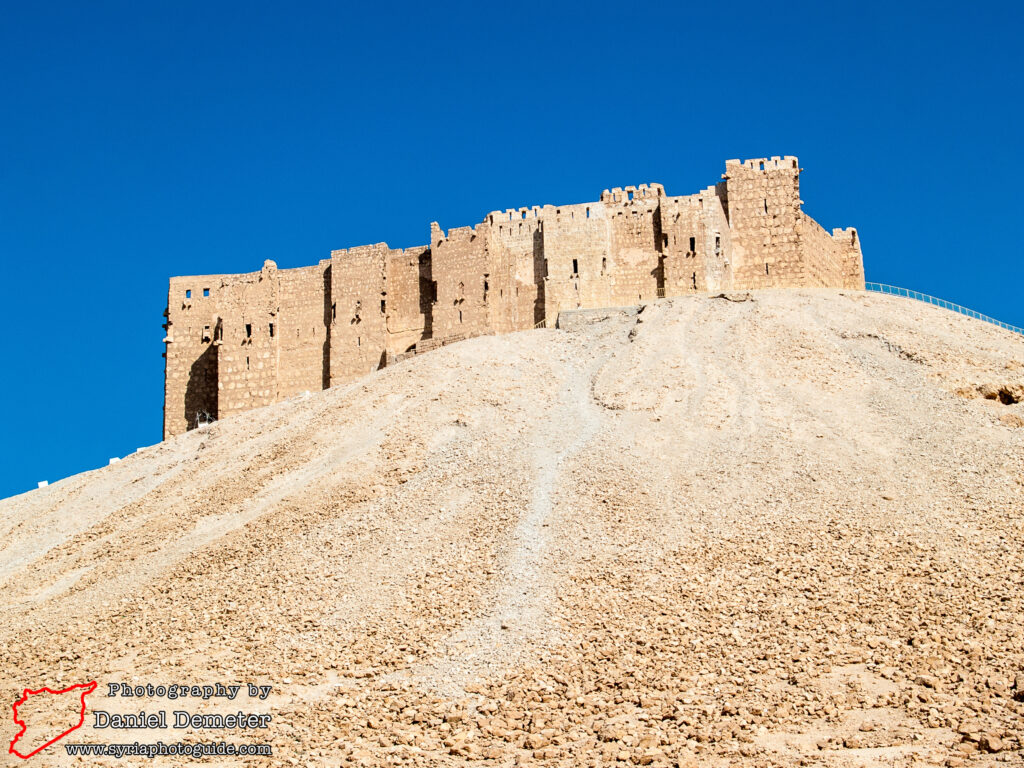
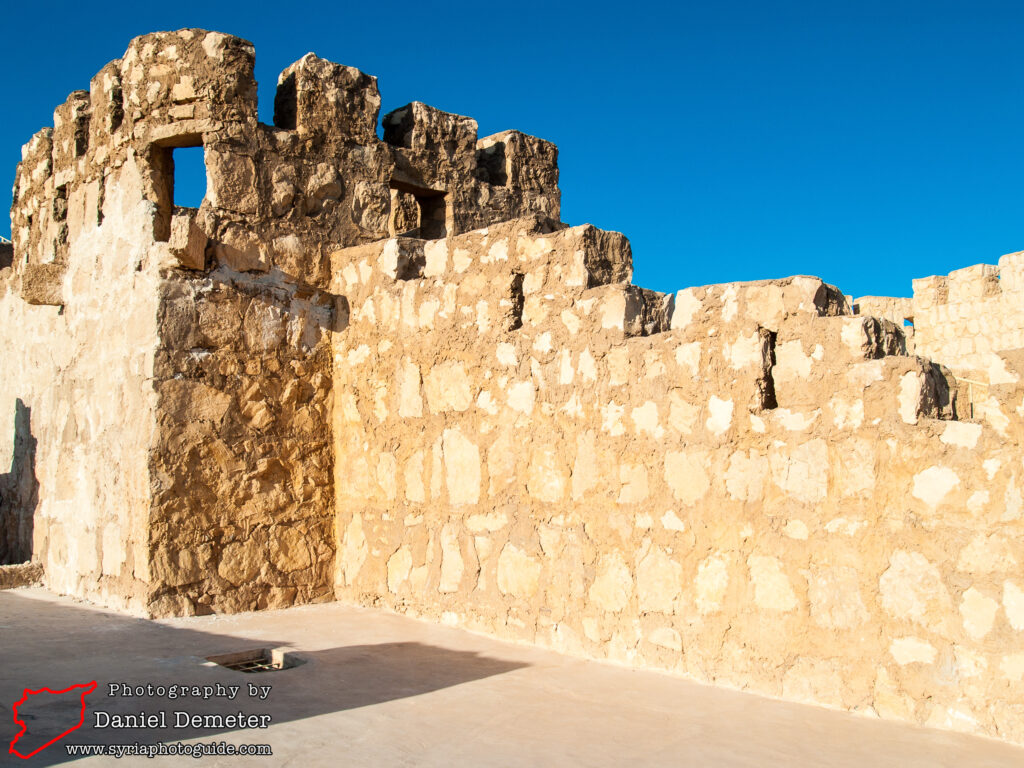
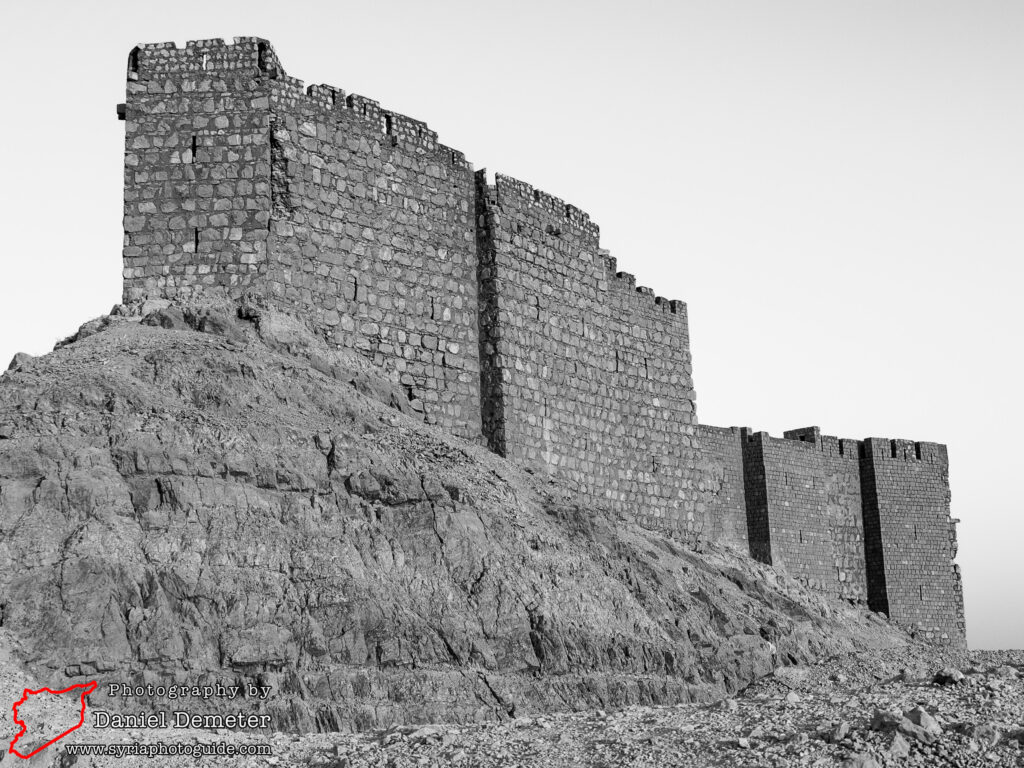
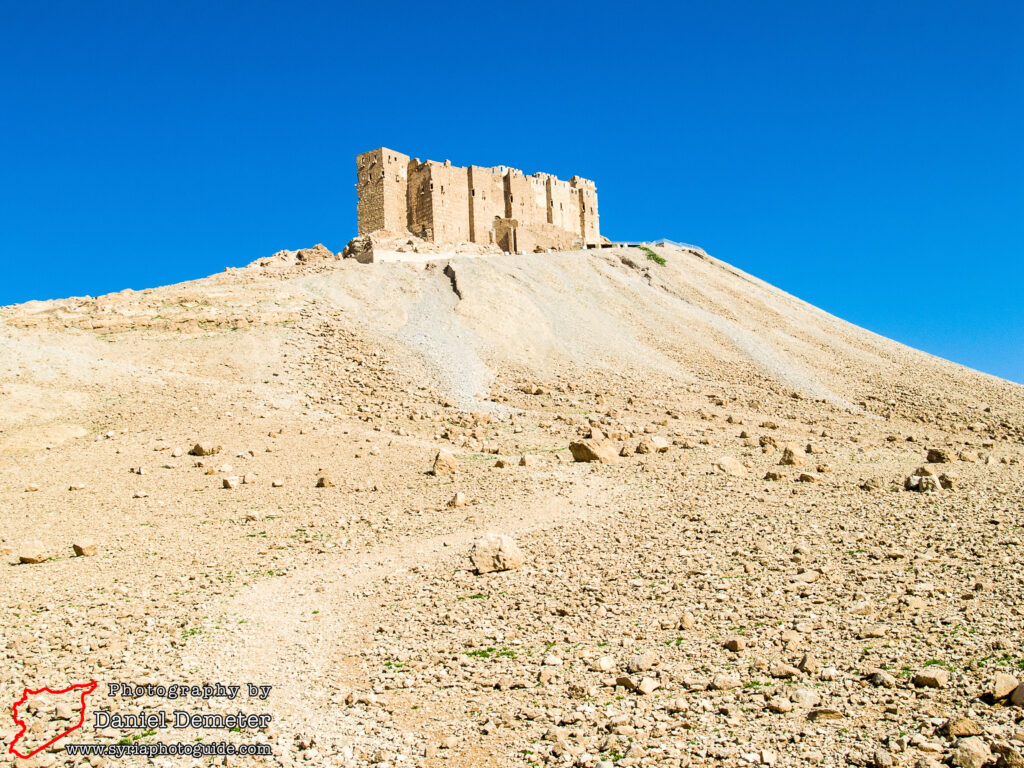
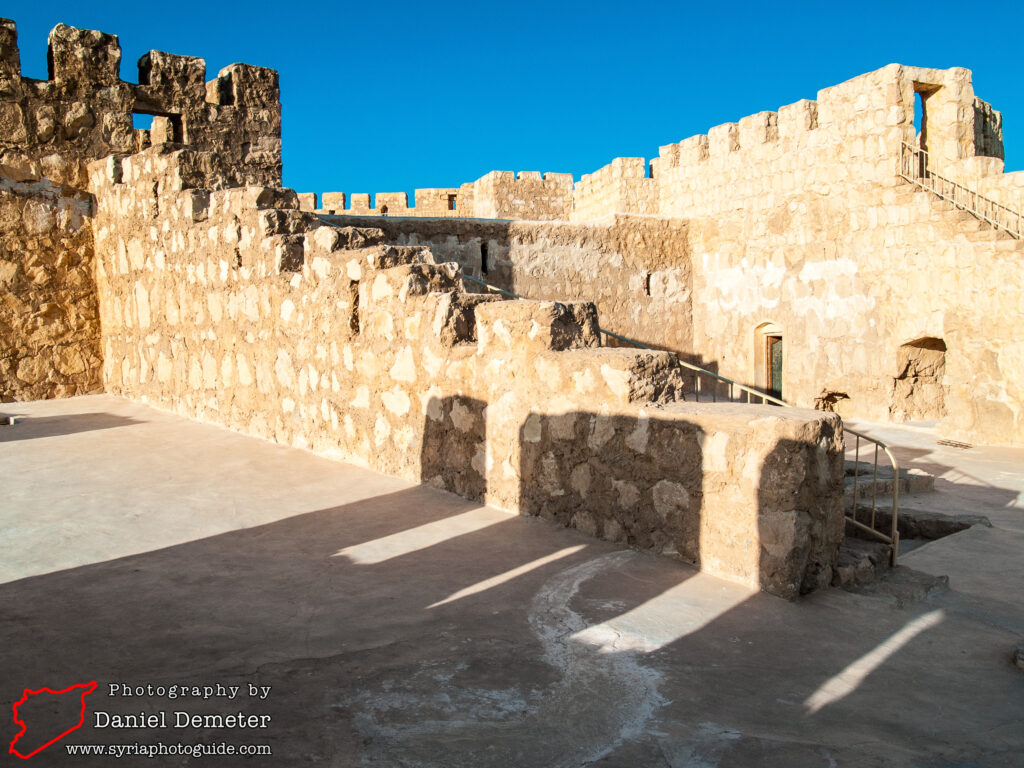
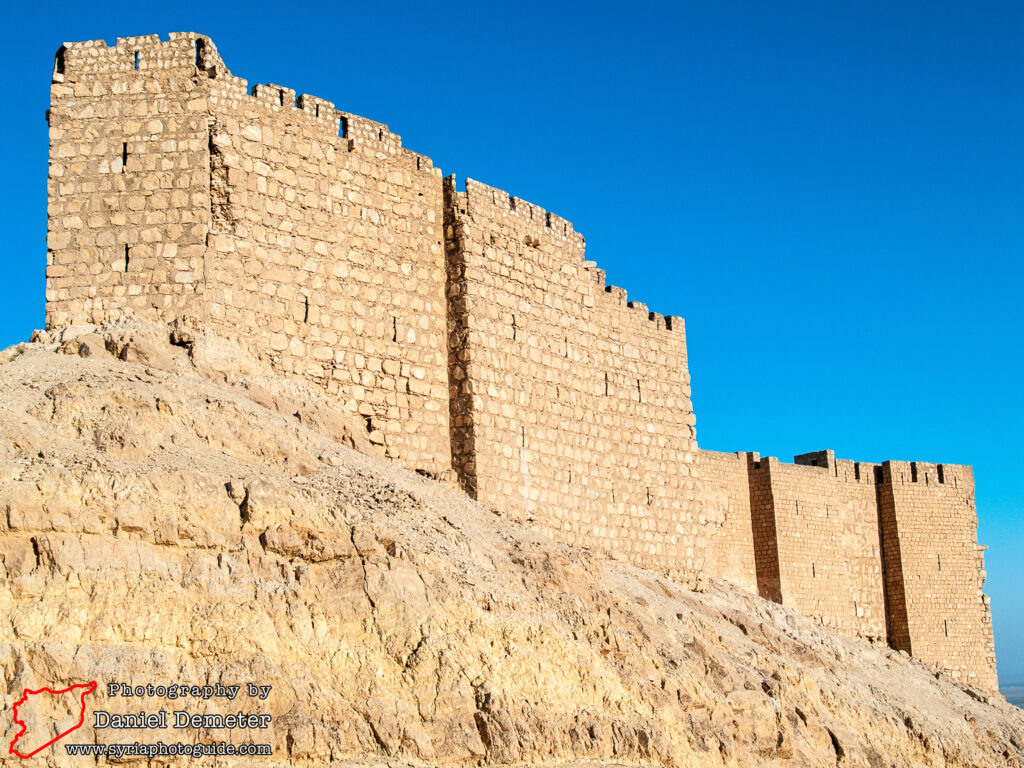
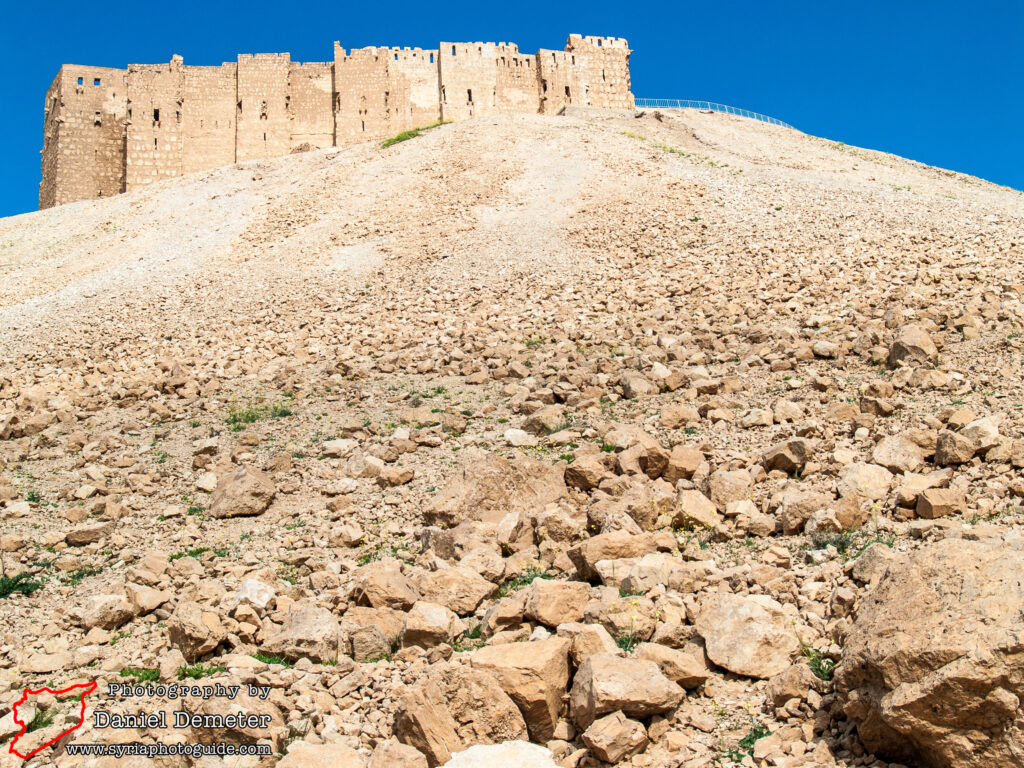
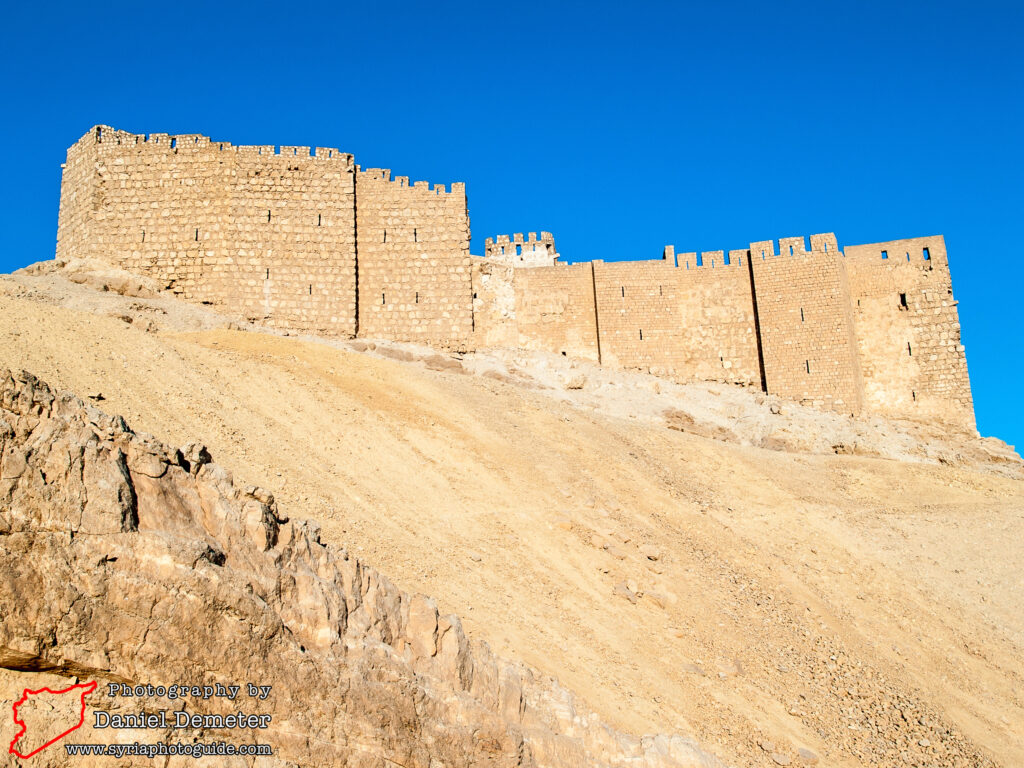
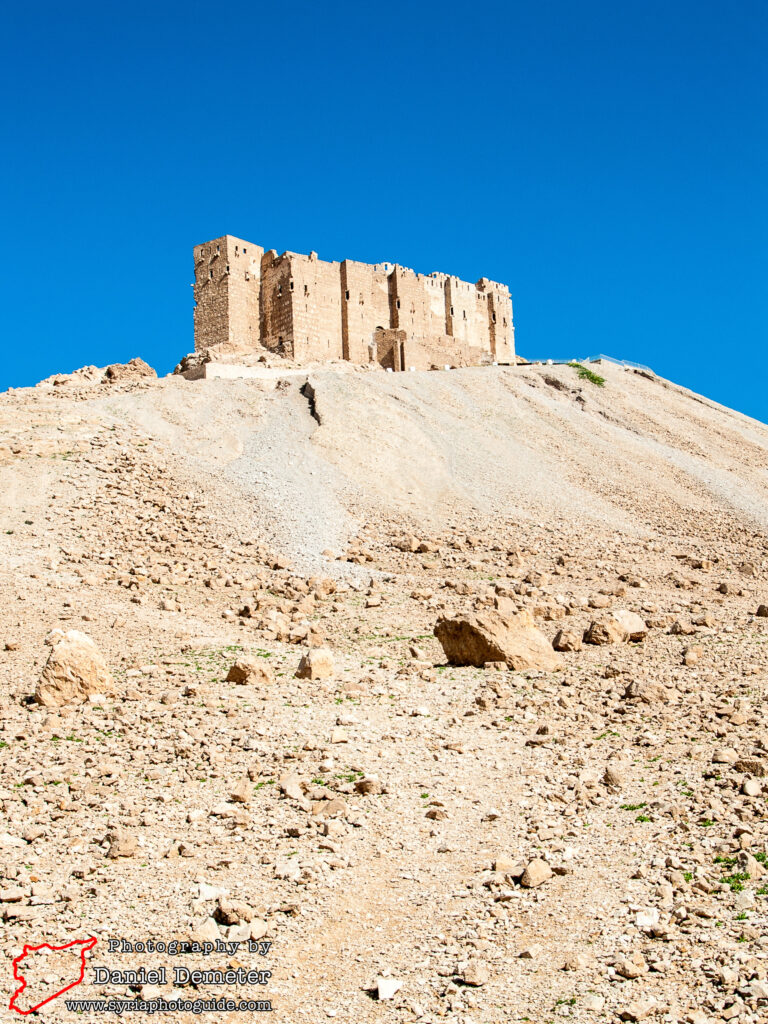

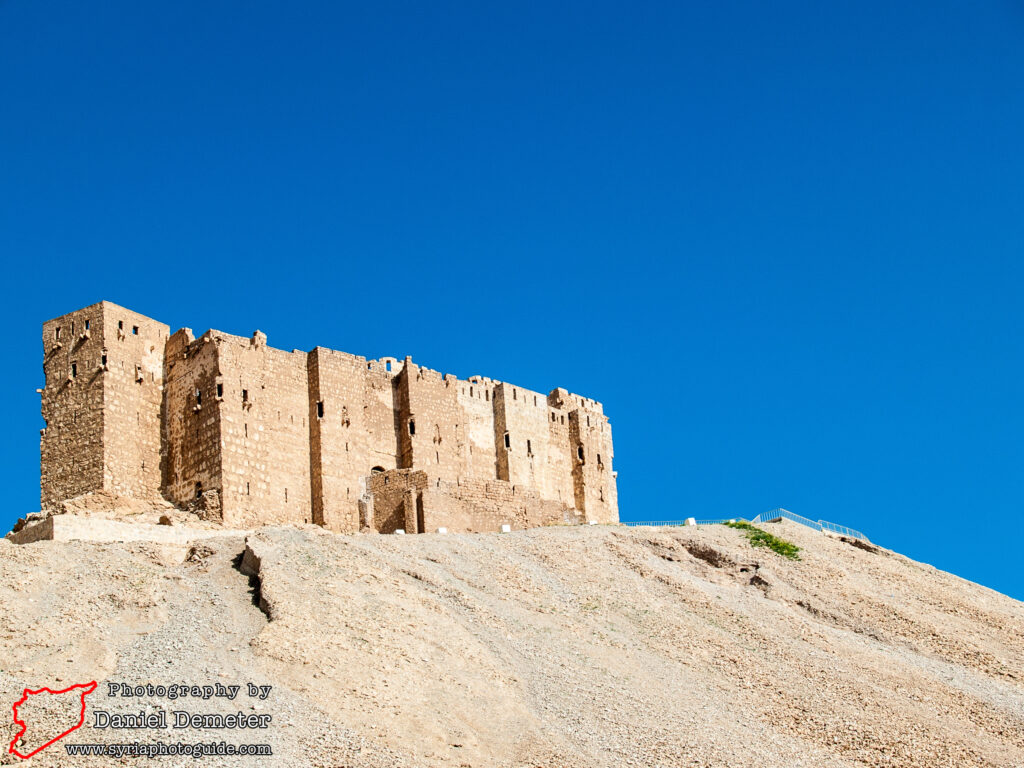
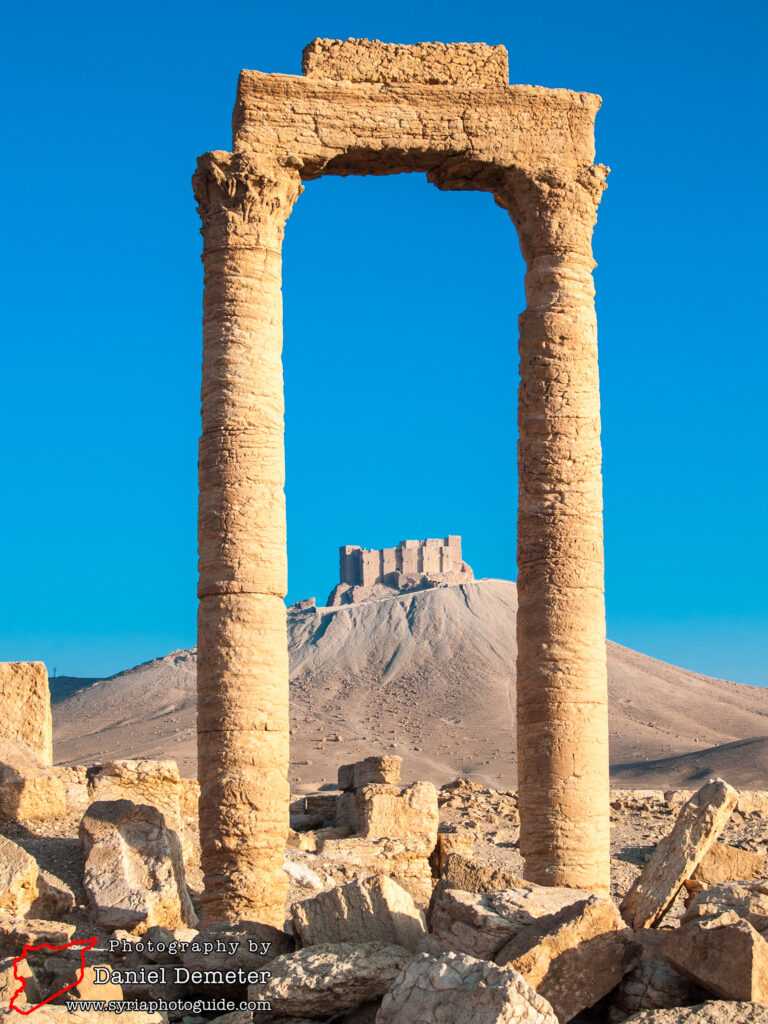
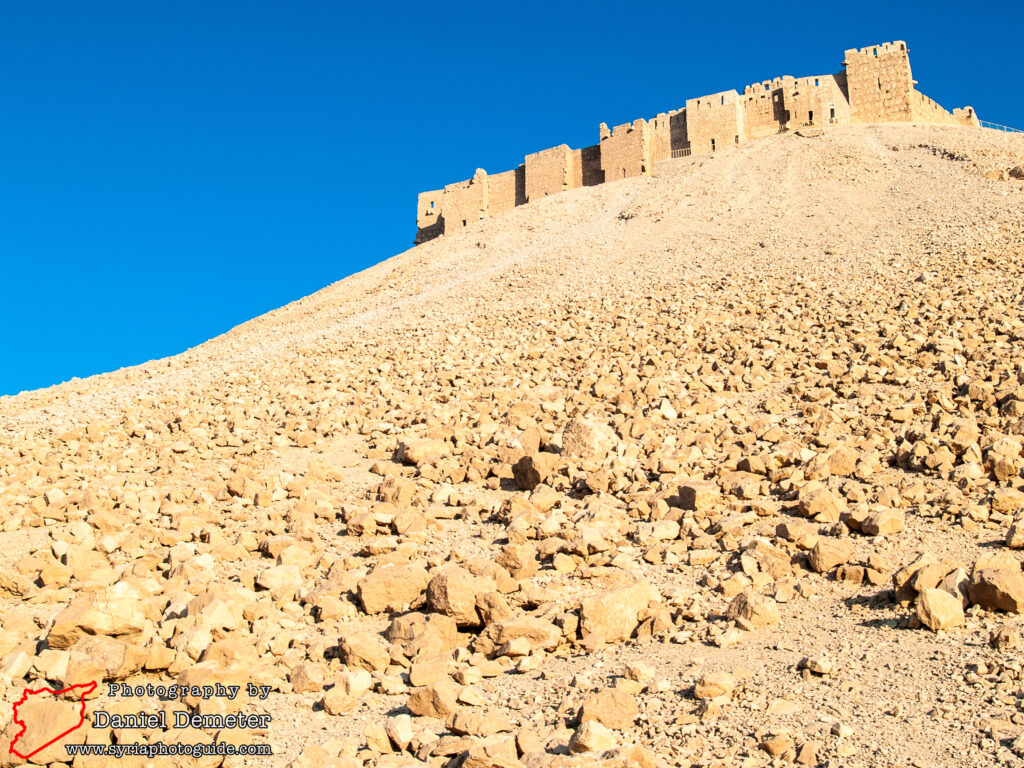
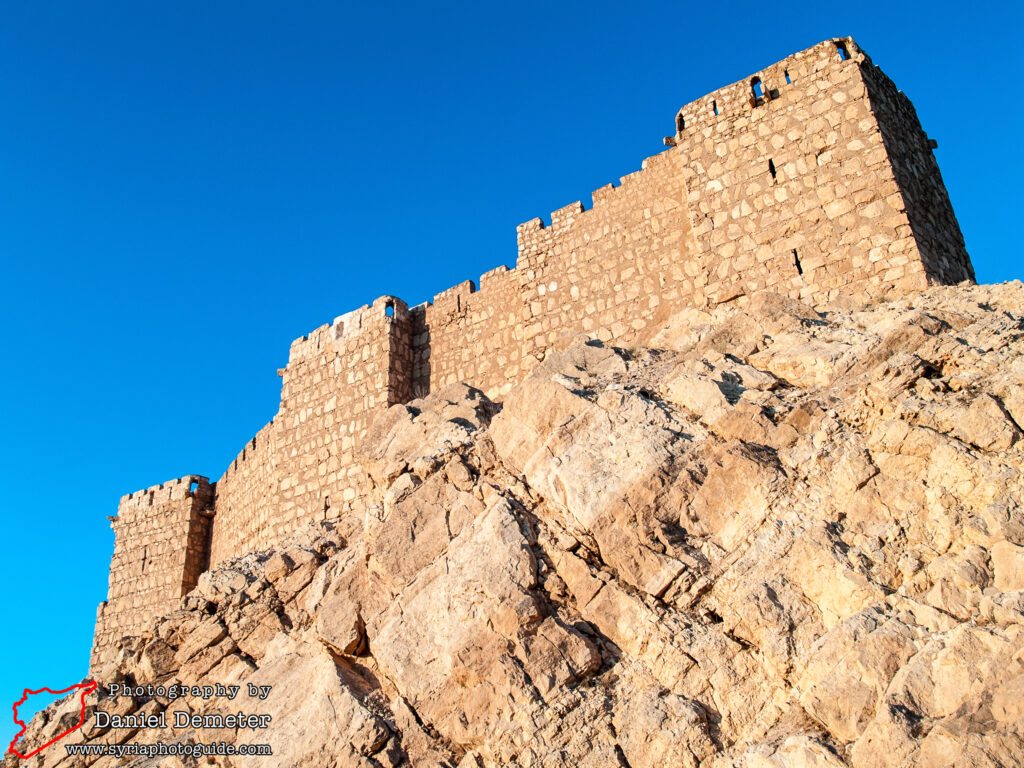
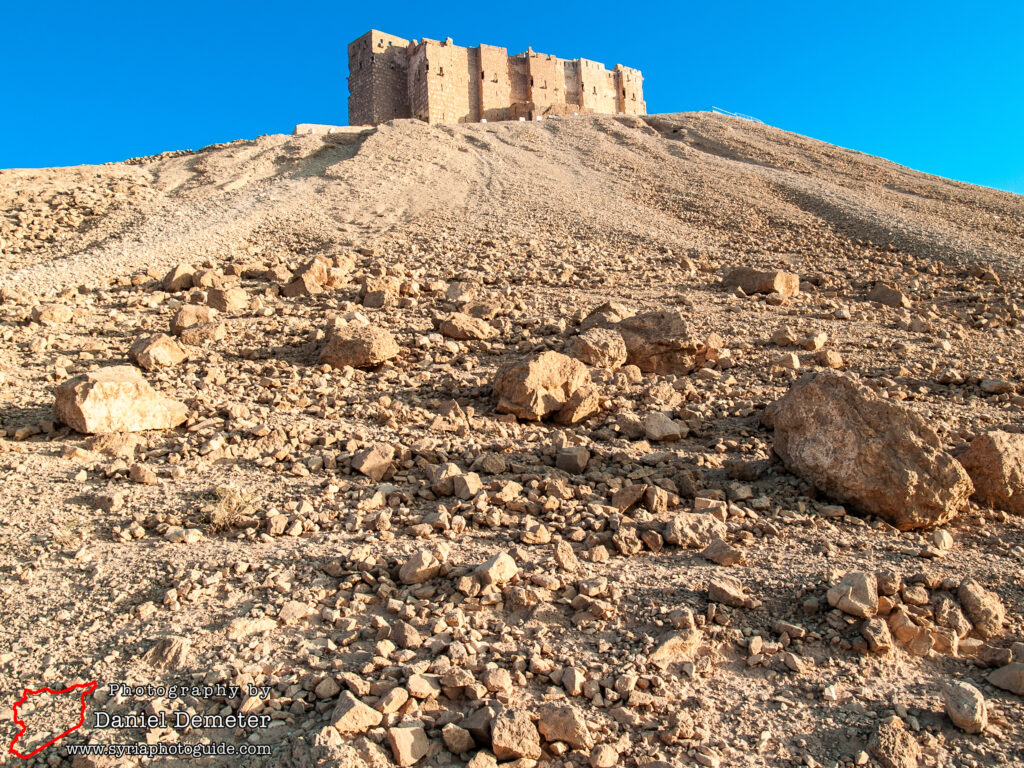
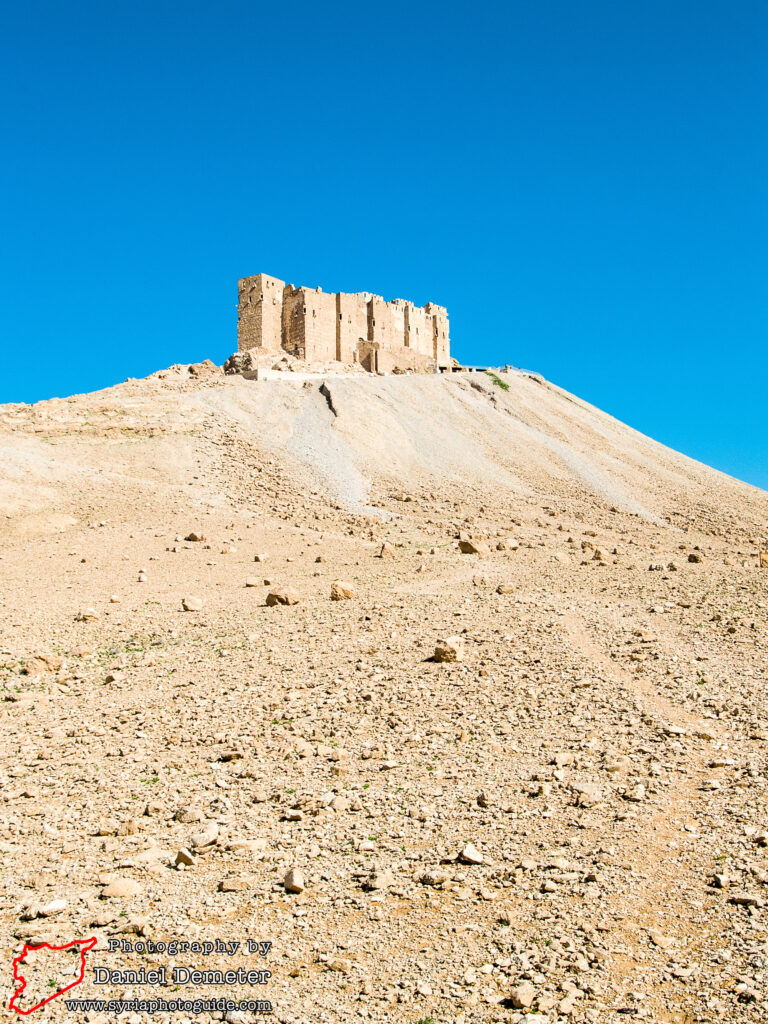
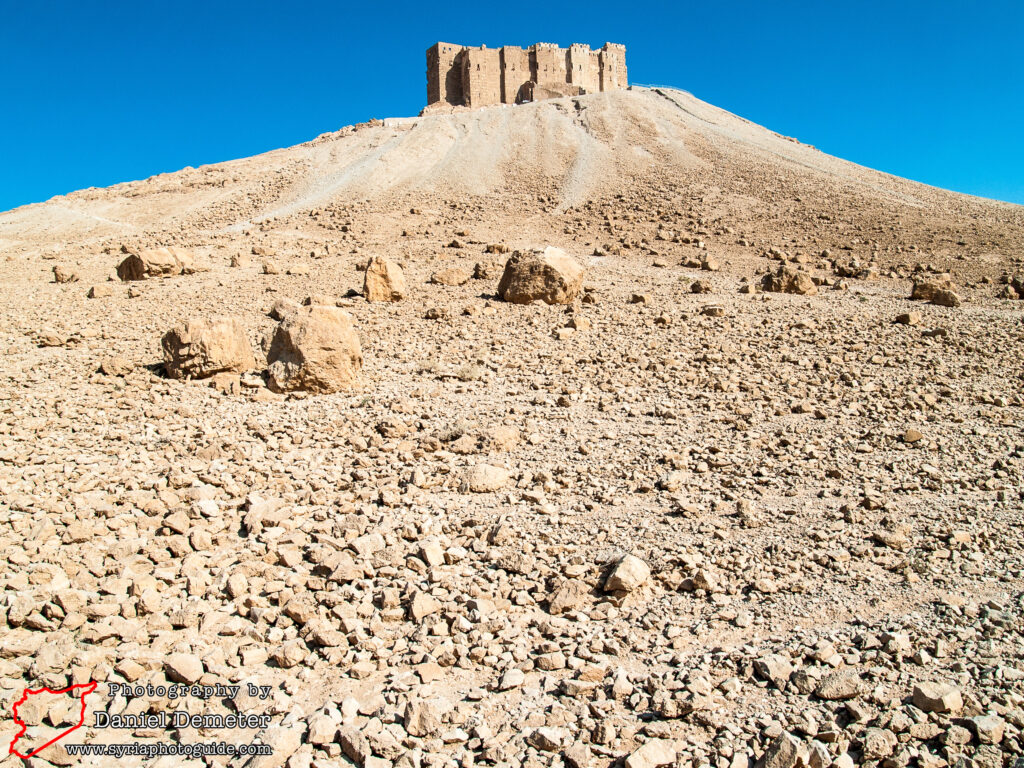
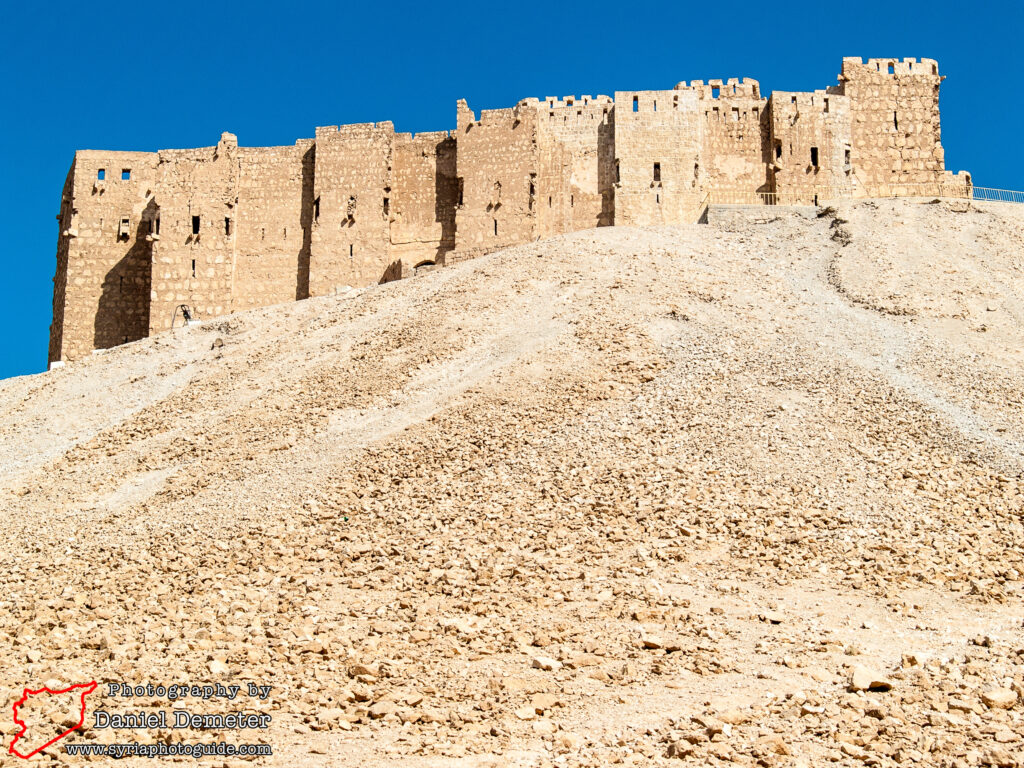
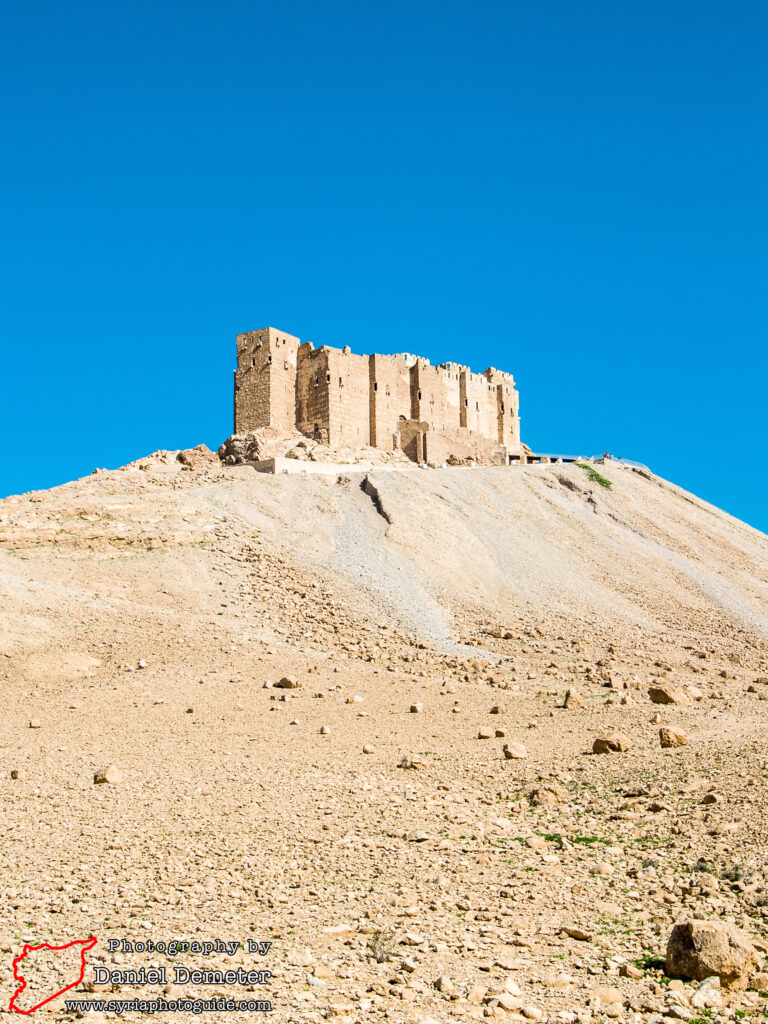
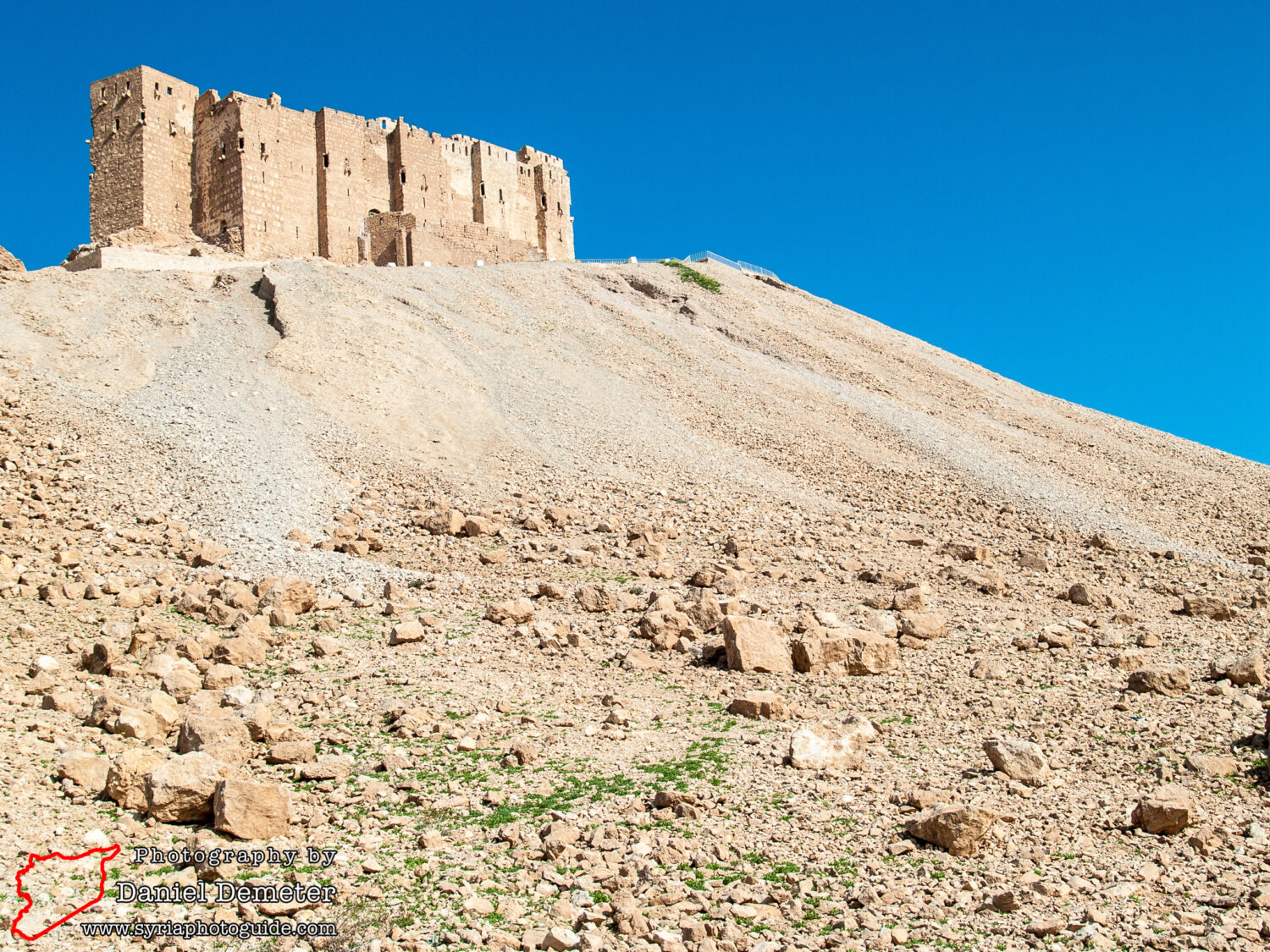
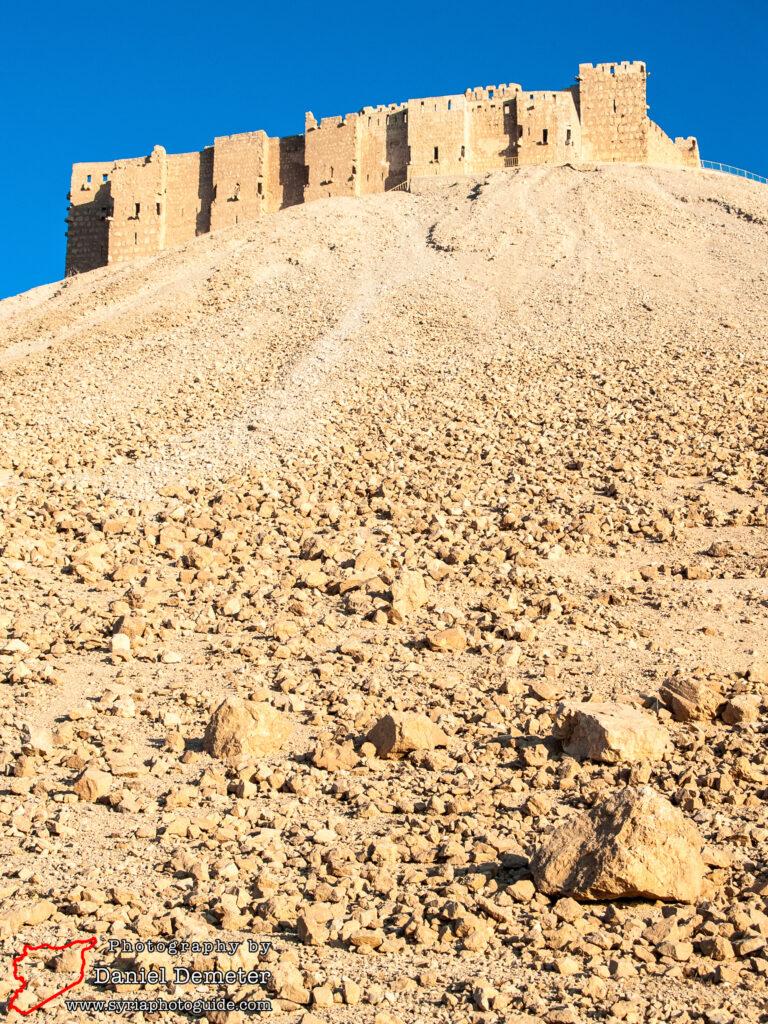
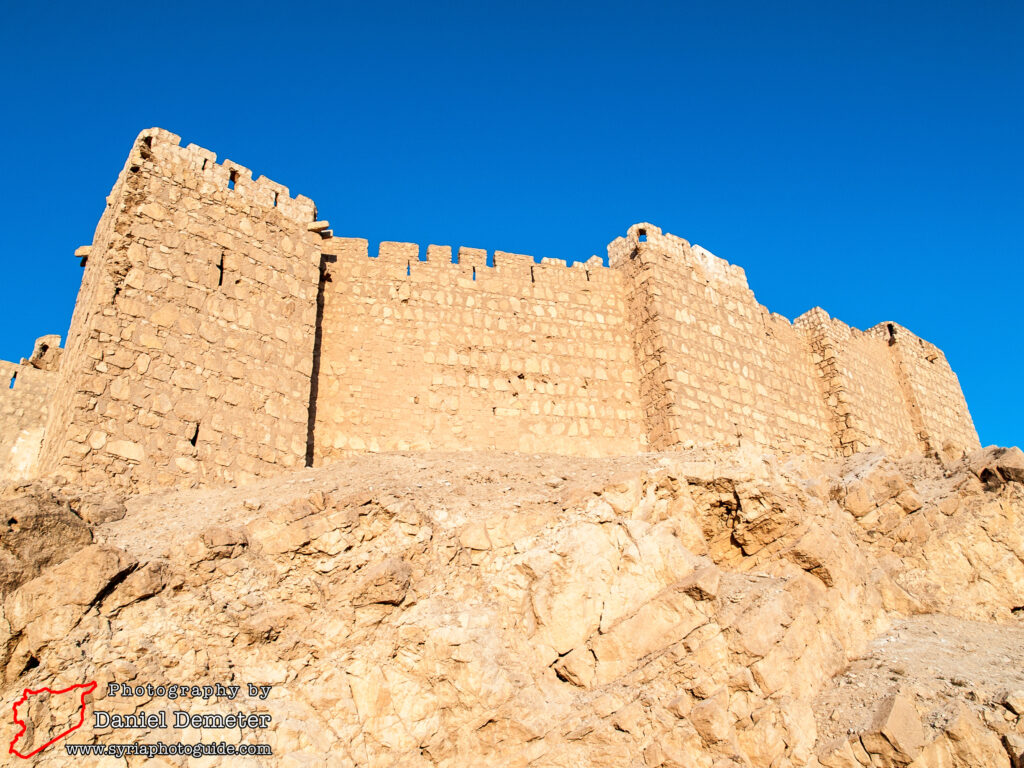
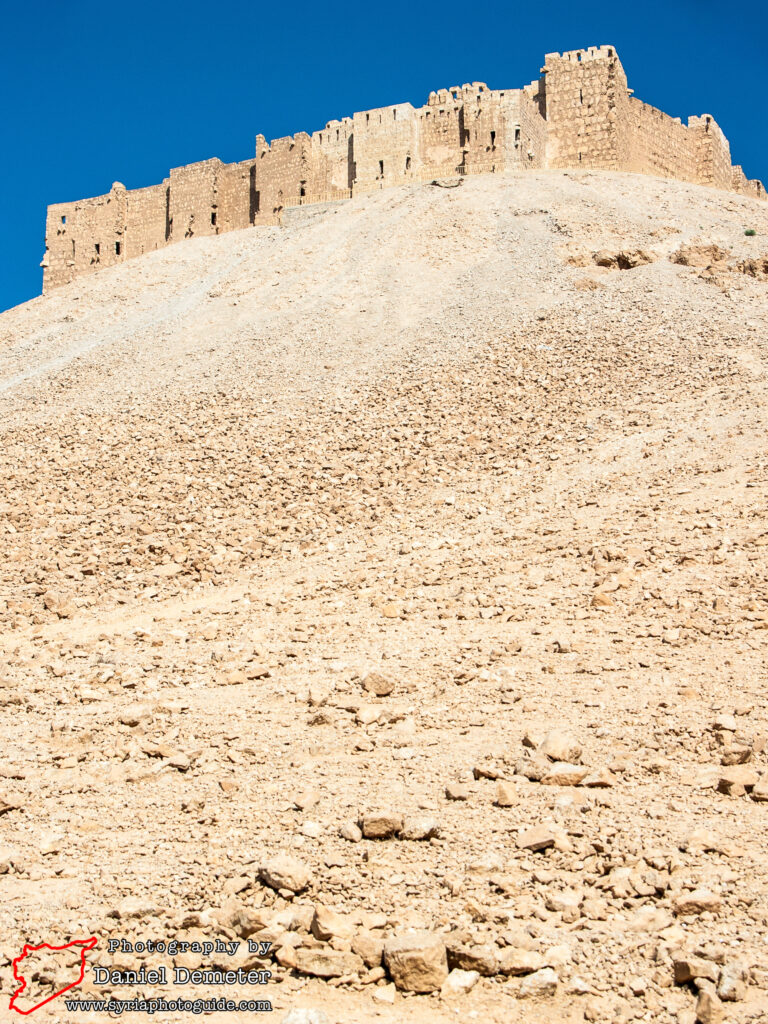
Preservation Status: The archaeological remains of Palmyra (تدمر), including Qalaat Shirkuh (قلعة شيركوه), are under enormous risk. Since May 2015, the town and environs have been under control of the Islamic State (الدولة الإسلامية) militant group, committed iconoclasts who have purposely targeted archaeological heritage in both Syria and Iraq for destruction. While some clashes have taken place around Qalaat Shirkuh (قلعة شيركوه), damage inflicted on the castle thus far appears to be minor.
Getting There: Palmyra (تدمر) is located at a major crossroads in the Syrian desert between three major cities. It is located east of Homs (حمص), northeast of Damascus (دمشق) and southwest of Deir al-Zur (دير الزور). Most buses traveling between Homs (حمص) or Damascus (دمشق) and Deir al-Zur (دير الزور) will stop in Palmyra (تدمر). Qalaat Shirkuh (قلعة شيركوه) is located west of the modern town and northwest of the acropolis. While it is possible to hike to the castle, many prefer to hire a taxi.
Coordinates: 34°33’46.00″N / 38°15’27.00″E
Transliteration Variants: Tadmur, Tadmour, Qalaat Shirku, Qalaat Shirkou
Rating: 8 / 10
